Baveno and its villas
The enchanting little lakeside town of Baveno , next to Stresa, is of Roman origin, and is famous for its mineral water springs and its quarries of pink granite, and as a holiday resort.
The fine lakefront promenade offers a superb view of the Borromean Islands, which can be reached by boats leaving from Baveno harbour. The architectural attractions of the town include the Parish Church of Santi Gervasio and Protasio and the Baptistery, which stand in a broad square accessed from Via Monte Grappa.
Since the mid-19th century many internationally famous personalities have stayed in Baveno, usually as guests in the opulent villas lining the shores of the lake.
Villa Henfrey-Branca Built between 1870 and 1872 to plans by the English engineer Charles Henfrey, Villa Henfrey-Branca is one of the most original buildings on Lake Maggiore, and was inspired by English castle architecture. Its exposed red brick, its turrets and spires, marble terraces and magnificent English-style garden give the house a fairytale appearance that attracts the attention of every one who strolls along the lakefront promenade. In the grounds there is also a pretty little Protestant church and a small castle built in 1882-1883 along the lines of the castle of Vogogna. Of the many eminent people who stayed here over the years, the most notable must be Queen Victoria of Great Britain, who came with her daughter Beatrice in 1879. Today the descendents of the royal families of Europe still visit the Branca family, who acquired the property after the death of Charles Henfrey.
Villa Fedora Standing in extensive grounds which separate it from the lake, away from the town centre, Villa Fedora is a severely elegant residence built in the first half of the 19th century; today it houses the Chamber of Commerce of the Verbano Cusio Ossola. It takes its name from the celebrated opera by the composer Umberto Giordano, who lived here for twenty years (1904-1924). The Umberto Giordano Festival of classical music, held in Baveno every July, was the brainchild of the maestro.
Villa Barberis Built in the early years of the 20th century, Villa Barberis stands out not only because of its dazzling white colour but also because of the exotic appearance of its original design. It was built by the wish of Alberto Barberis, a cosmopolitan traveller from Vercelli who lived for many years in the East. In fact, the style of his villa recalls the exotic atmosphere of the Thousand and One Nights, typified especially by the minaret in the garden, which also contains specimens of tropical plants. There are many interesting decorative features such as the high relief depictions of the Dome of San Gaudenzio Church in Novara and the bell tower of Sant’Andrea in Vercelli on the curved tympanum, or the pictures of still-lifes and landscapes which Barberis himself painted on the walls of the top floor six-arched loggia.
Villa Durazzo (Lido Palace Hotel) An impressive late 19th century mansion, Villa Durazzo was built by the Marquis Durazzo of Genoa on a prime site on the shore, right opposite the Borromean Gulf. Later on the Mayor of Baveno Gerolamo Rossi made the villa into a luxury Belle Époque hotel which was to welcome a number of famous guests, such as Sir Winston Churchill, who came here on his honeymoon in 1908 and on other occasions.
Villa Brandolini d’Adda Built in the 16th century over a former convent, the villa displays a number of fine architectural and decorative features. The garden is the only one of its kind in the world, being divided into four parts: Italian, English, French and Japanese.
Also worth a mention are Villa Carosio, designed by the famous Art Nouveau architect Giuseppe Sommaruga, Villa Claudia, where the celebrated playwright Luigi Illica stayed, and Villa Provana di Collegno-Galtrucco, the scene of numerous meetings of major figures in the political history of Piedmont in the later 19th century.

Surroundings
A documentary about baveno on sky, #ciaobaveno, the whatsapp channel to contact the office of tourism baveno, theatrical review “bis 2 lakes 2 stages”, conventions and meetings.
The beautiful countryside around Lake Maggiore offers peerless convention facilities. With its natural and artistic beauties boasts a long tradition in the meeting and convention hosting sector with many excellent venues and services, and unrivalled hospitality facilities. Quality, hospitality and the varied and beautiful scenery make it one of the preferred destinations for visitors from all around the world.
- Towns and cities to visit
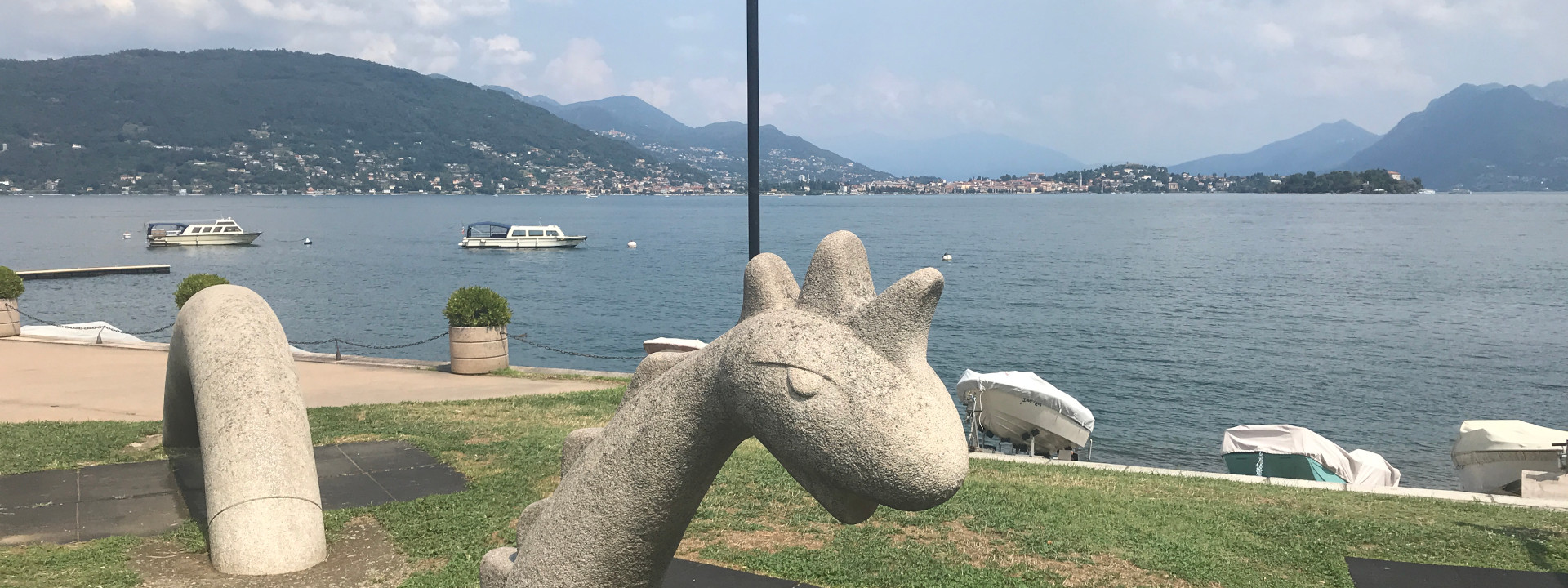
What to see and what to do in Baveno
A town of approximately 5,000 inhabitants, Baveno stands on the shores of Lake Maggiore in Piedmont and is a center rich in history, traditions and culture.
Since ancient times it has been an important trading port that connected Ossola and the Alpine territories with the main Lombard cities, Venice and Genoa.
In the nineteenth century, thanks to the development of communication routes, Baveno was transformed into a sought-after place of passage for those coming from the North or for those returning there, while the advent and strengthening of the railways included Baveno in the international tourism circuit.
What should be seen and visited in Baveno
Church of s.s gervaso e protaso.
The Romanesque architecture dated 1150-75 with gneiss roof and the earlier bell tower (1050-1075) with six floors with a square plan, have an interior resulting from various interventions with 15th century frescoes, altar frontals in the side chapels, two tables attributed to Defendente Ferrari and an Annunciation by Camillo Procaccini.
The building, dating from the 5th century, has a square outdoors and octagonal indoors. Marvelous frescoes dating from the early sixteenth century adorn the lantern and the vault while the walls are painted in frescoes in the nineteenth century.
The Domo and Baitone districts
The two neighborhoods of Domo and Baitone which make up the center of Baveno, present suggestive views that are worth the detour. From the church square you can see via Domo, the narrow street that connects the church of Santi Gervaso e Protaso with the charming square of the ancient village of Domo, where you can admire a low building with a high fireplace, perhaps a community oven. Opposite there is an ancient chapel with a fresco depicting the Virgin, erected as an ex voto for the release of the plague in 1630. In the background is the picturesque Morandi house. Walking next to the bakery, a small road leads to the lakefront, for more than 1.4 kilometers of promenade to enjoy the gardens and the view of Laveno.
Flowerbed "The lake and the mountain"
The work, designed by the architect Fabrizio Bianchetti, takes on an important significance to characterize the resources of the territory of the area. It contains a series of vertical stone slabs that recall the profile of a mountain, made with the most important stones of the province: Beola Argentea, Green Granite from Mergozzo, Pink Granite from Baveno and White Granite from Montorfano.
What to do in and around Baveno
- take one of the itineraries on foot : you are spoiled for choice because the Baveno itineraries will satisfy all needs and interests: from the historical-archaeological walk, to the granite path or the villas, up to the paths that connect Baveno to villages in the surroundings. All of them are listed on the city's tourist website.
- visit the Special Nature Reserve of Fondotoce : it is an environment of rare beauty, protected by the Piedmont Region and placed under the protection of the Management Body of Parks and Nature Reserves of Lake Maggiore which extends from the camping area north of Feriolo, for 365 hectares. Perfect for cycling too
- visit Feriolo : which is a pretty town just 3 km from Baveno. It is located in a natural bay of rare beauty. The small village of fishermen and stonecutters was an important commercial center for local products (fish, cheese, hay, firewood) and a place of processing and embarkation of the famous marbles and granites of the area: the Candoglia marble, the white of Ornavasso, the white granite of Montorfano and the pink of Baveno.
Tips about where to sleep in Baveno
These are just some of the accommodation facilities in Baveno You can find all the hotels, B & Bs and campsites where you can spend a stay or a holiday in Baveno on Lake Maggiore here.
How to get to Baveno
It is possible to reach Baveno:
- by car : A26 motorway towards Gravellona Toce, Baveno exit
- by train : Milan - Domodossola International Railway Line
Your perfect holiday on Lake Maggiore in one of our selected properties!
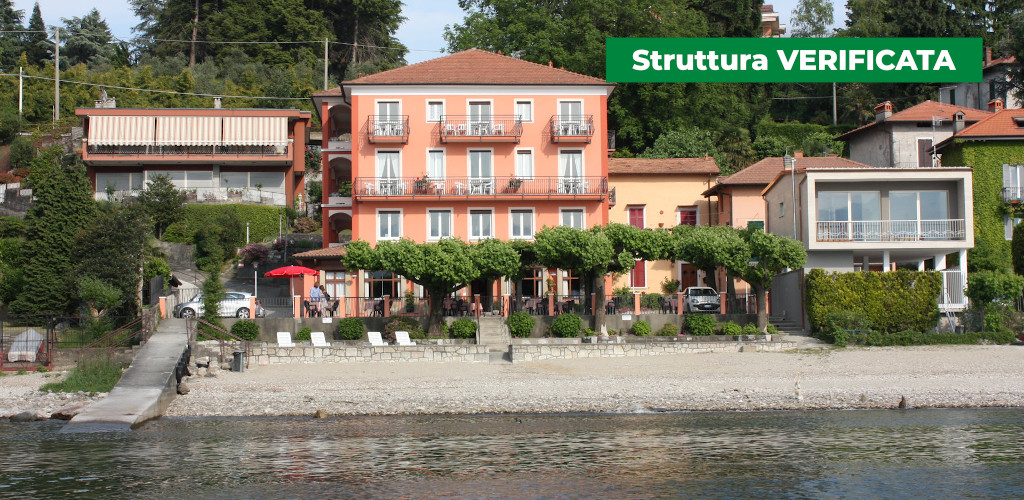
Hotel Riva is located in one of the most characteristic places on Lake Maggiore, in the Reno di Leggiuno area. Thanks to this feature, it offers a magnificent view of the Gulf of Borromeo and its islands, Stresa and the alpine range of Monte Rosa .
Scopri di più...
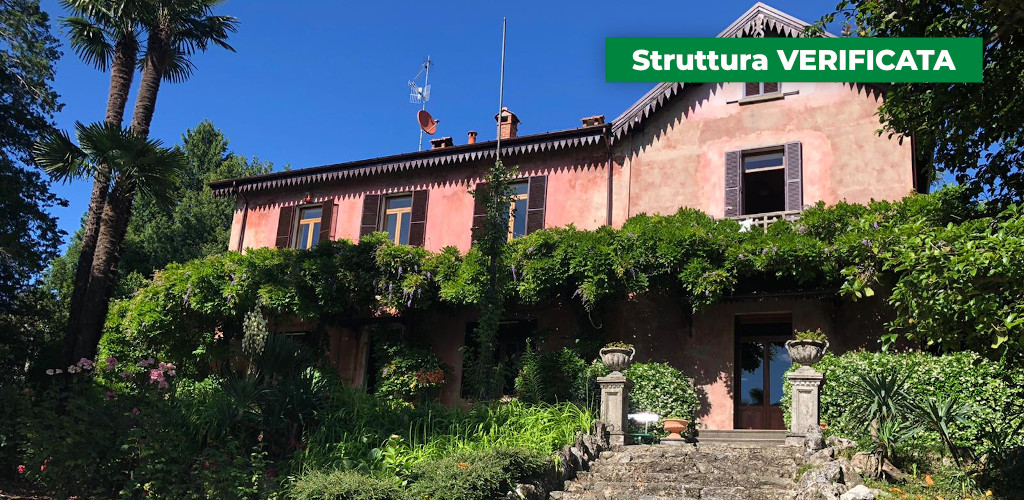
Casa della Gioia
The holiday house "Casa della Gioia" is located in Castelveccana, a city overlooking the Lombardy shore of Lake Maggiore in the province of Varese. This is an antique residence of great charm located in a refined natural setting .
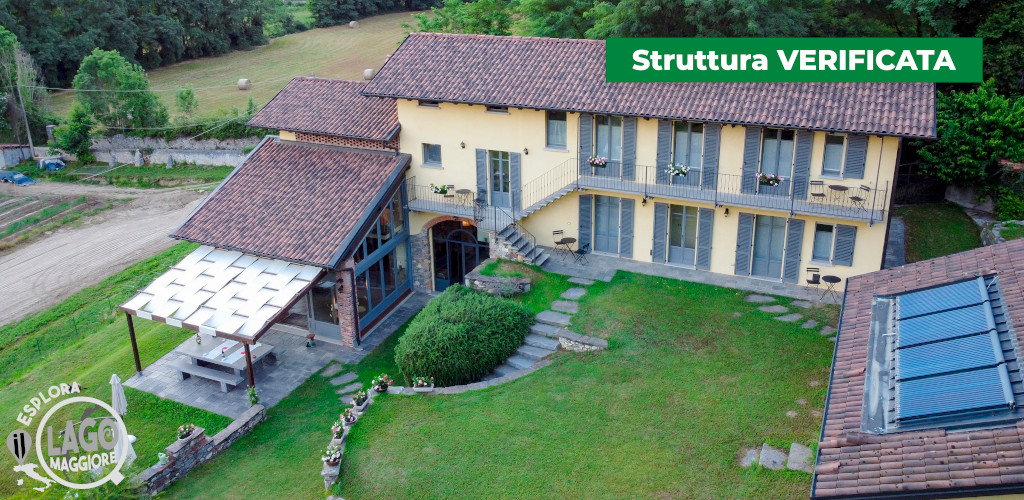
Cascina Canée
Cascina Canèe is surrounded by greenery on the hills of Angera , a town that dominates the Lombardy side of Lake Maggiore.

Hotel Moderno
The Moderno Hotel is a 3-star hotel on the Piedmontese shore of Lake Maggiore located in Premeno, a small town in the Upper Verbano at about 850 meters above sea level .
Discover all
Hotel Lake Maggiore - B&B Lake Maggiore
© 2016 - 2022 Esplora il Lago Maggiore
- Places of interest
- Towns and cities
- Bed and breakfast
- Spring/Summer 2023 offers
Top Things to Do in Baveno, Italy - Baveno Must-See Attractions
Things to do in baveno, explore popular experiences, tours in and around baveno.

The best of Lake Maggiore on a private guided boat tour

Cesarine: Small group Pasta and Tiramisu class in Lake Maggiore

Private Tour of Borromean Islands with Micaela Guide

Stresa: Isola Pescatori and Isola Bella Hop-on Hop-off boat tour

The three Borromean Islands with a private tour guide

Private Tour of Orta San Giulio on Lake Orta with Micaela

Unique Lake Maggiore Day Trip from Milan

2 Hour Private Cruise on Lake Como by Motorboat

Private Boat Tour on the Lake Como

Private Cooking Class at a Cesarina's Home in Stresa
Top attractions in baveno.

Other Top Attractions around Baveno
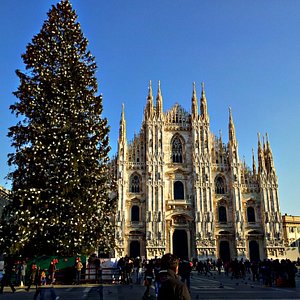
What travellers are saying
- Piazza della Chiesa
- Villa Fedora
- Tourist Information Centre
- Chiesa Parrochiale dei Santi Gervaso e Protaso
- Cantiere del Verbano
- Summer Boats
- Aquadventure Park
Top Things to Do in Baveno, Italy
Places to visit in baveno, explore popular experiences, tours in and around baveno.

The best of Lake Maggiore on a private guided boat tour

Cesarine: Small group Pasta and Tiramisu class in Lake Maggiore

Private Tour of Borromean Islands with Micaela Guide

Stresa: Isola Pescatori and Isola Bella Hop-on Hop-off boat tour

The three Borromean Islands with a private tour guide

Private Tour of Orta San Giulio on Lake Orta with Micaela

Unique Lake Maggiore Day Trip from Milan

2 Hour Private Cruise on Lake Como by Motorboat

Private Boat Tour on the Lake Como

Private Cooking Class at a Cesarina's Home in Stresa
Top attractions in baveno.

Other Top Attractions around Baveno

What travellers are saying
- Piazza della Chiesa
- Villa Fedora
- Tourist Information Centre
- Chiesa Parrochiale dei Santi Gervaso e Protaso
- Cantiere del Verbano
- Summer Boats
- Aquadventure Park

Baveno, where the sunsets are even more romantic.
Nestled among green hills sloping gently down to the waters of Lake Maggiore , Baveno is a Piedmontese municipality in the province of Verbano-Cusio-Ossola of about 5,000 inhabitants.
The ancient village, rich in history, tradition and culture, is enriched by a splendid view of the Borromean Islands and the breathtaking and evocative panorama makes Baveno a jewel of peace and relaxation .
The village, located along the Via Severiana Augusta that connected Milan with the Sempione Pass and known for its low-mineral waters and pink granite quarries, was already an important commercial hub in ancient times and a crossroads of art and culture , as evidenced by the 5th-century Baptistery and the Romanesque parish church of SS. Gervasio and Protasio .
Walking along the narrow streets of Domo and Baitone, the two districts that make up the historic centre of Baveno, it is possible to admire suggestive views as far as the lake, where a romantic walk along the lakefront offers visitors a beautiful panorama of the Borromean Islands.
Over the centuries, this unique place has attracted more and more visitors, including illustrious ones, who have wanted to take up residence here: Villa Fedora, Villa Branca, Casa Morandi, Villa Durazzo , are just a few of the many marvellous residences that adorn the Piedmont shore of the lake and that, since the mid-19th century, have hosted numerous internationally renowned personalities .
With a host of trails to visit, Baveno has plenty of opportunities for visitors to discover its history and culture as they stroll through fragrant flower-filled parks and picturesque streets with unique views in a calm and romantic setting.
28831 Baveno VB, Italia
Related articles
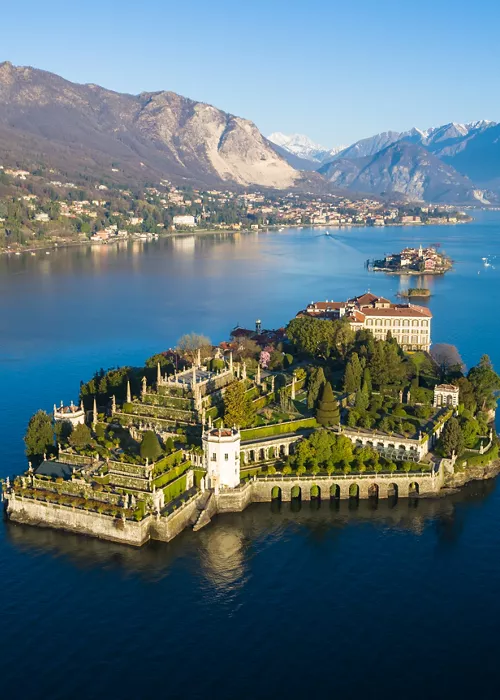
The Borromean Islands
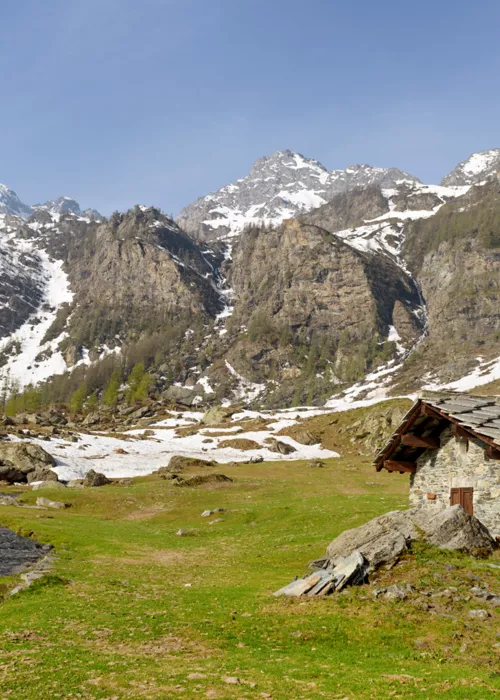
Outdoor and nature 4 seasons: Piedmont is the experience you don't expect
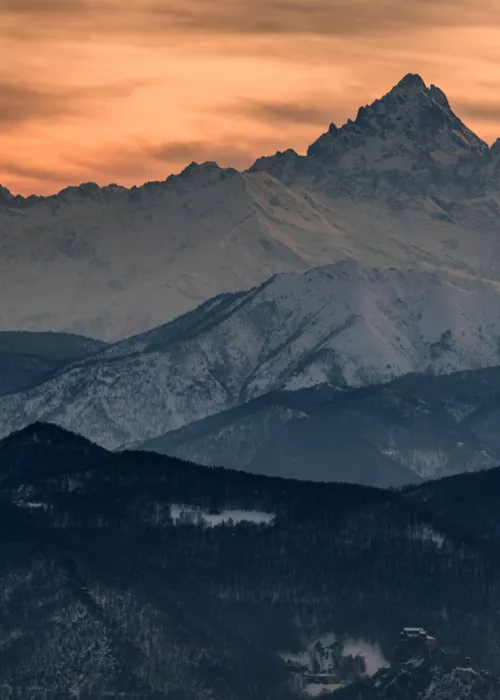
Winter detox: a thousand ways to experience the mountains in Piedmont
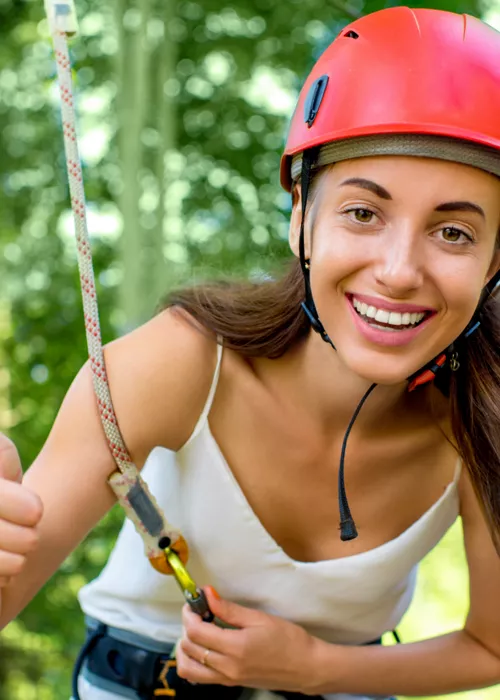
Piedmont: soaring above Lake Maggiore
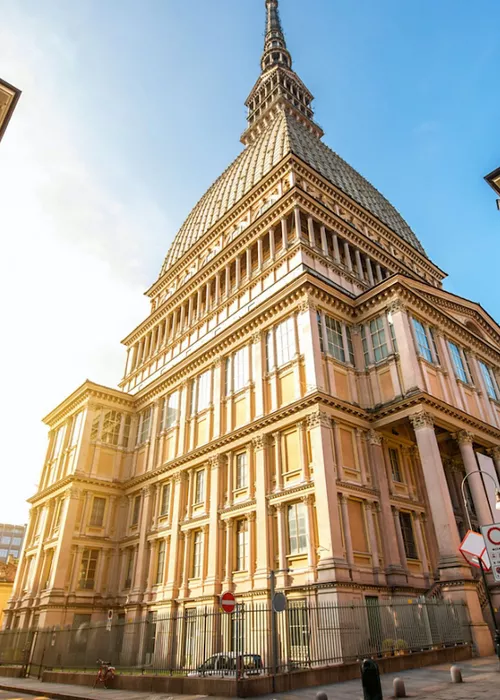
Piedmont: a fascinating region of nature and history
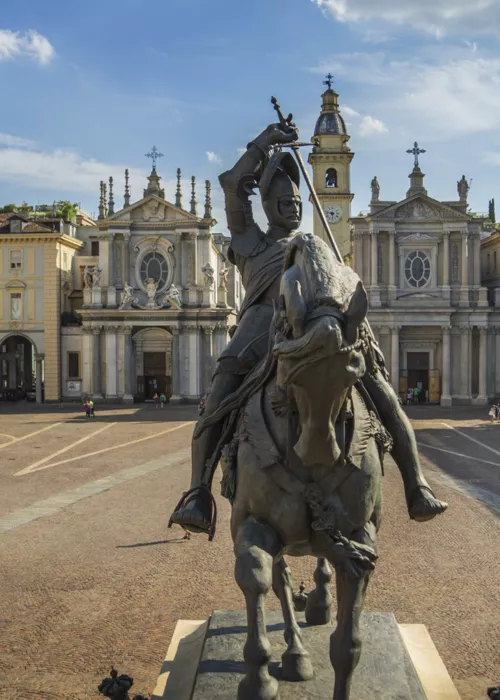
Turin turns sustainability into art
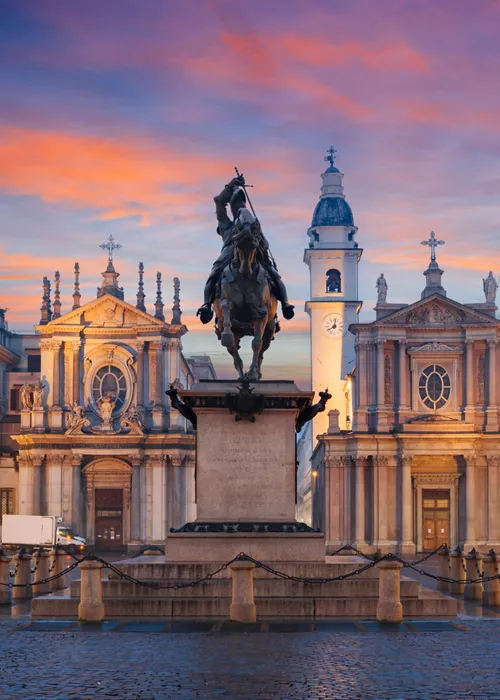
2 days in Turin: the itinerary
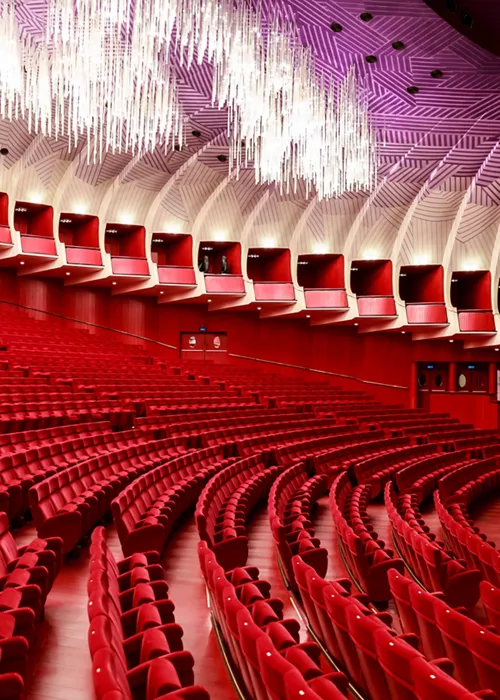
The Teatro Regio (Royal Theatre) in Turin: an avant-garde Savoy treasure
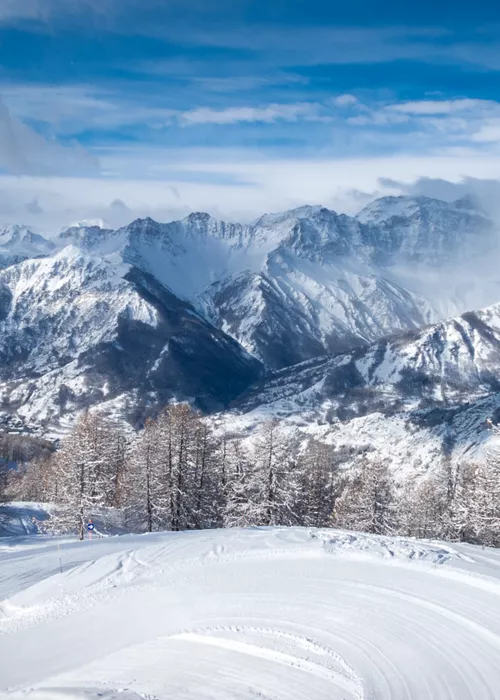
In the Turin Alps: Via Lattea and Bardonecchia
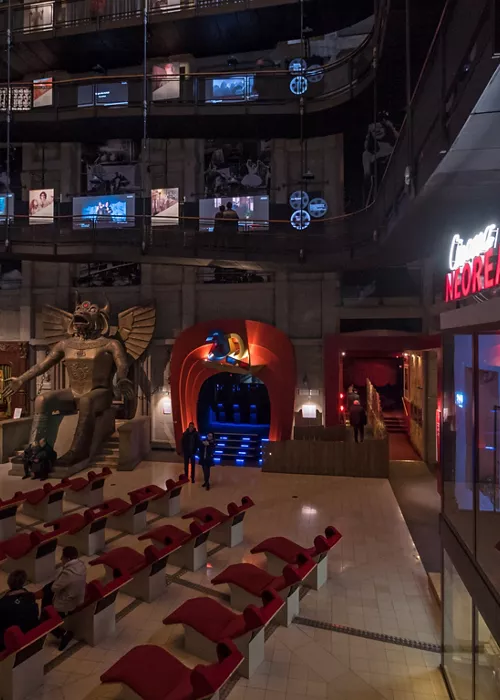
In Turin, in the National Museum of Cinema, a jewel inside the Mole Antonelliana
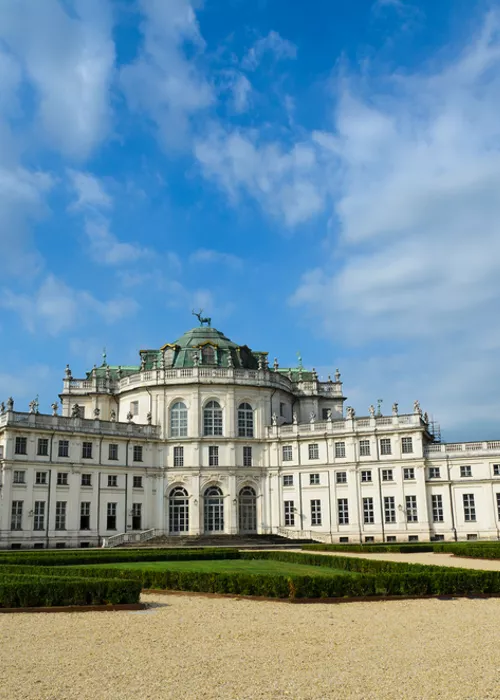
Turin and the magnificent Savoy residences
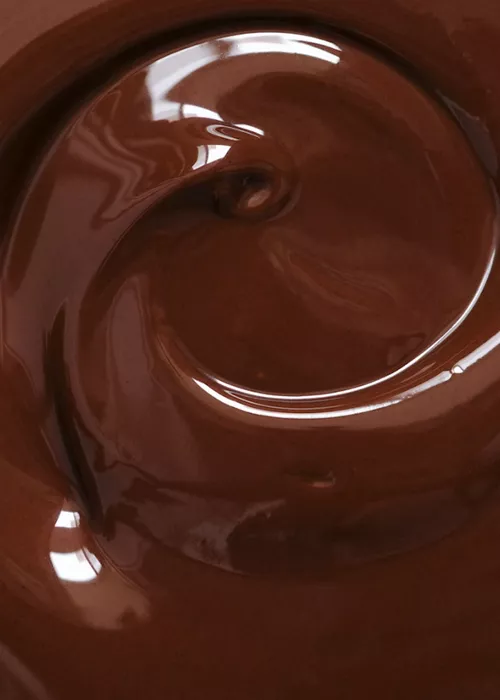
Turin and Its Chocolate Tradition
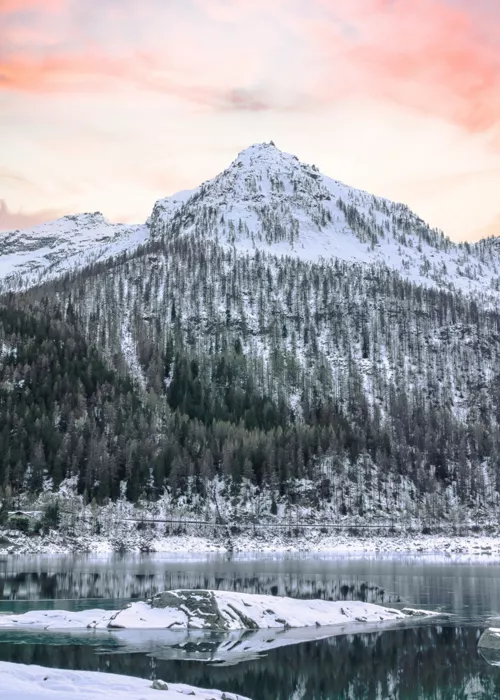
In the mountains near Turin: here's where to go
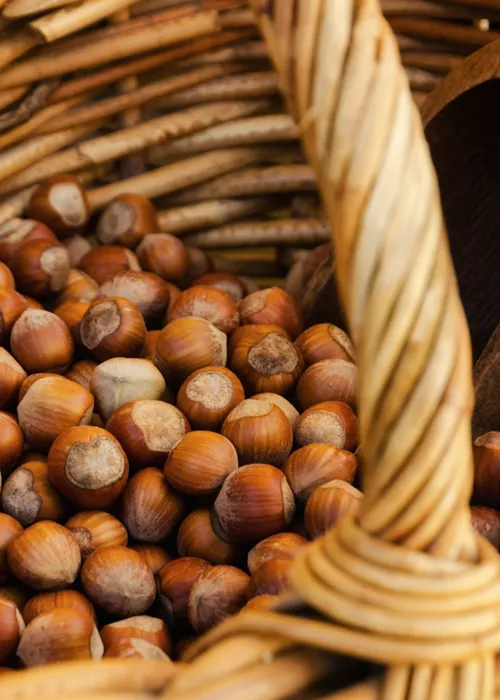
The Piedmont region by way of Roberto Caporuscio’s pizza
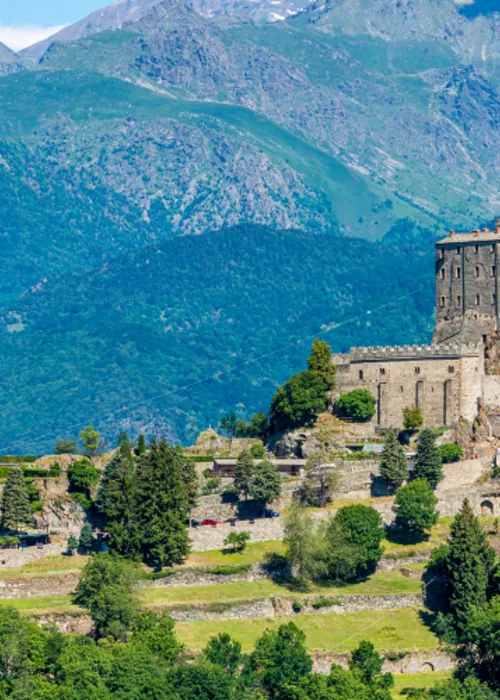
The Susa Valley and Its Villages
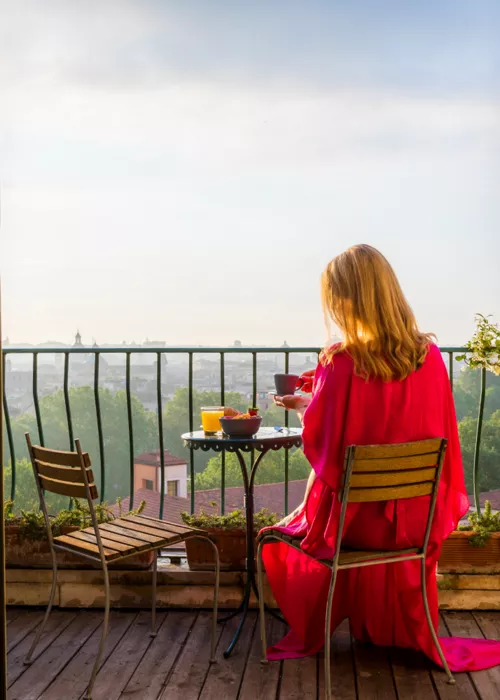
Piedmont historic and unusual hotels, dream locations for tours in pursuit of beauty
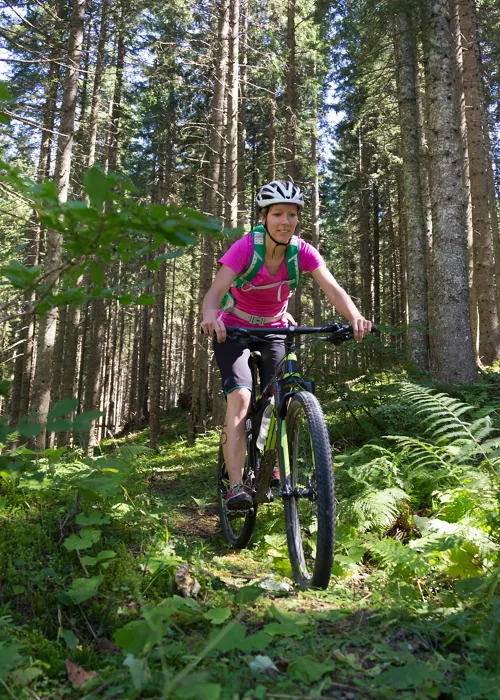
Piedmont on two wheels: the Sauze d'Oulx Bike Park
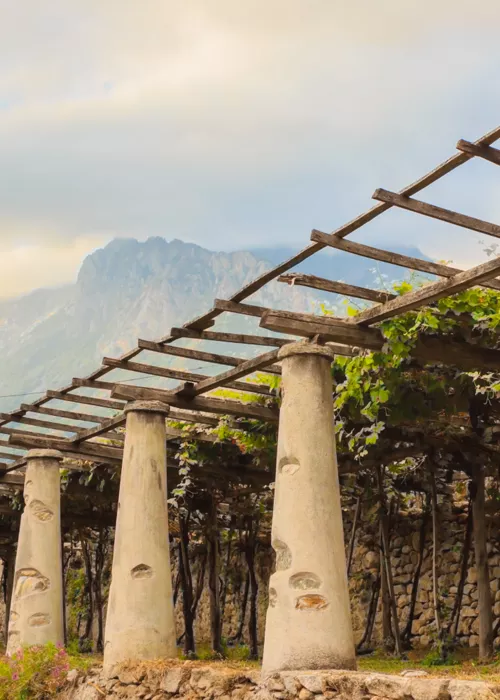
The terraced vineyards of Carema: unique landscape and an unmissable wine
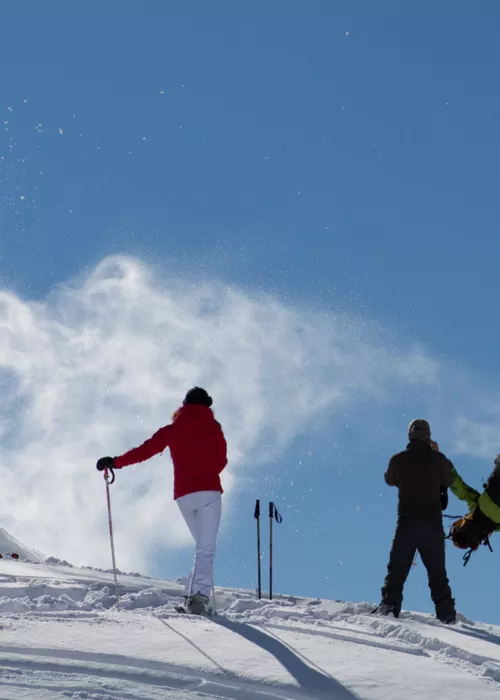
Skiing in the Cuneo Alps: Riserva Bianca and Limone Piemonte
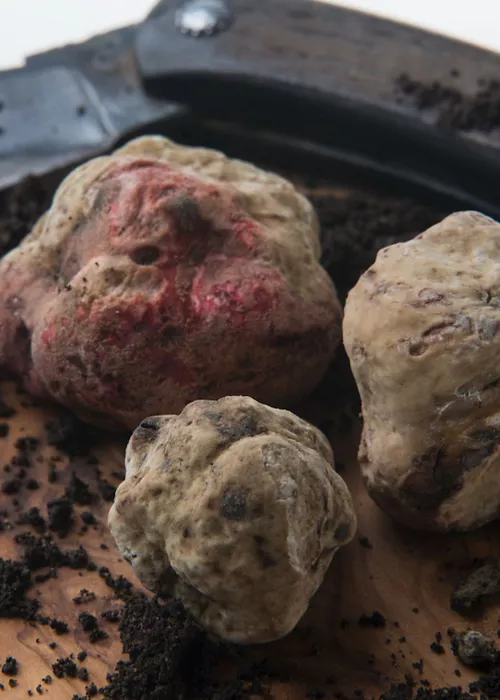
Diamond of Alba: The White Truffle
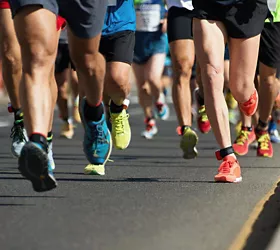
Torino Royal Marathon 2024
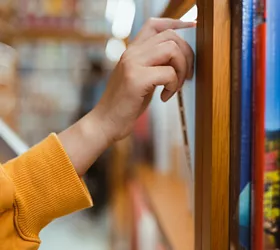
Turin International Book Fair
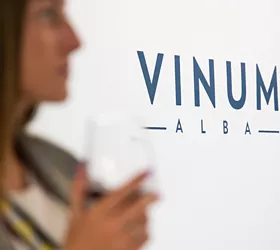
Kappa FuturFestival 2024

Continue living like an Italian
Subscribe to the Newsletter so as not to miss places, events and experiences for experiencing the best side of Italy: the authentic one.
Keep up to date
Would you like to learn about the most authentic experiences to be had in Italy, stay up to date on the most interesting events, discover our special offers and receive lots of insider hints and tips?
Save your favorite places
Create an account or log in to save your wishlist
Do you already have an account? Sign in
THE 10 BEST Things to Do in Baveno
Things to do in baveno, explore popular experiences, tours in and around baveno.

The best of Lake Maggiore on a private guided boat tour

Cesarine: Small group Pasta and Tiramisu class in Lake Maggiore

Private Tour of Borromean Islands with Micaela Guide

Stresa: Isola Pescatori and Isola Bella Hop-on Hop-off boat tour

The three Borromean Islands with a private tour guide

Private Tour of Orta San Giulio on Lake Orta with Micaela

Unique Lake Maggiore Day Trip from Milan


2 Hour Private Cruise on Lake Como by Motorboat

Private Boat Tour on the Lake Como

Private Cooking Class at a Cesarina's Home in Stresa
Top attractions in baveno.

Other Top Attractions around Baveno

What travellers are saying
- Piazza della Chiesa
- Villa Fedora
- Tourist Information Centre
- Chiesa Parrochiale dei Santi Gervaso e Protaso
- Cantiere del Verbano
- Summer Boats
- Aquadventure Park
Expedia Rewards is now One Key™

Visit Baveno
Baveno is an enchanting town on the western shores of Lake Maggiore. From the early Roman merchants who traded in the 1st-century B.C. settlement to the 19th-century nobles who established their summertime retreats by the shore, Baveno has a long history of hospitality. Explore this pretty town to glimpse its architectural treasures and Eden-like islands.
Get acquainted with Baveno’s elite heritage when you wander the town’s superb lakefront promenade. On the eastern side of the promenade you’ll see the façades of stately waterfront villas topped with vivid terracotta tile roofs. Explore the rambling old-town streets, which twist and turn to reveal pretty parks and grand villas. Check out the castle-like turret of Villa Henfrey-Branca, stroll around the grounds of Villa Fedora and note the Moorish embellishments in the design of Villa Barberis. The 19th-century Villa Durazzo is a mansion also known as the Lido Palace Hotel, which welcomed Sir Winston Churchill on his honeymoon in 1908.
Take a trip through time when you see the enduring 16th-century decorations on Villa Brandolini D’Adda and the frescoes within the Romanesque Church of Saints Gervase and Protaso.
On the western side of the promenade, take in expansive views of Lake Maggiore and the Borromean Islands. Get a closer look at these offshore jewels by jumping aboard one of the ferries departing from Baveno Harbor. Isola Madre is renowned for its perfectly manicured botanical gardens, while Isola Bella is encompassed by an exquisite Italianate palace and garden. On Isola Superiore, you’ll find restaurants serving up lake-caught seafood.
Look back toward the pink-granite foothills of Mount Camoscio, which rises behind the town. The top of the mountain is the source of the curative Fonti di Baveno, the spring that feeds thermal baths throughout the region.
Baveno is easily accessible via the regional train line that delivers visitors to the heart of the old town. Alternatively, reach the resort from Milan in less than 90 minutes via the major highway that runs northwest from the city. Stay the night in Baveno’s stunning waterfront villas. Visit Baveno to experience the resort’s remarkable lake views, offshore islands and healing waters.
- Baveno Hotel Deals
- Vacation Rentals in Baveno

Reviewed on Sep 3, 2023

Reviewed on May 31, 2023

Reviewed on Oct 16, 2023

Reviewed on Apr 23, 2024

Reviewed on Apr 22, 2024

Reviewed on Jul 5, 2023
Check Baveno hotel availability
Popular places to visit.
- Villa Fedora
Relax in the English-style park in front of this beautifully preserved 19th-century villa. Attend a live music concert under the stars in summertime.
- Church of Saints Gervase and Protaso
Trace the history of this church through its architecture and decorations, which have been updated almost every century since its initial construction in the 1100s.
- Baveno Ferry Terminal
Explore the waterfront in Baveno with a trip to Baveno Ferry Terminal. Wander the lakeside and picturesque gardens in the area.
- Adventure Park
Enjoy an outing to Adventure Park during your stay in Baveno. Wander the lakeside and picturesque gardens in the area.
- Villa Henfrey-Branca
Find out about the history of Baveno with a stop at Villa Henfrey-Branca. Wander the lakeside and picturesque gardens in the area.
Spiaggia Lido Toce
Why not spend a lazy afternoon at Spiaggia Lido Toce during your trip to Baveno? While you're in the area, stroll along the lakeside.
Things to do
7-days italian lakes and riviera tour from milan, reviews of baveno, 5/5 - excellent.
Go to all three islands in Lago Majorie. They are all lovely. Just remember they don't start serving dinner until 7:30.
Great place to be
Baveno was clean. Safe and friendly with a local feel. Great location as a base for sightseeing
- Cities near Baveno

Gravellona Toce
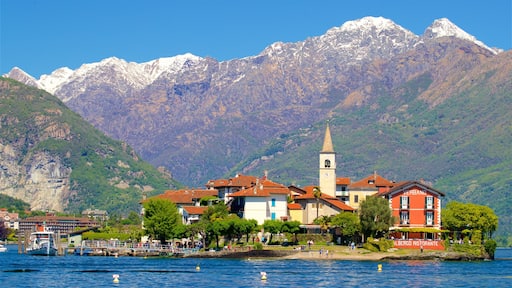
Isola dei Pescatori
- Places of interest
- Lake Varese
- Domodossola Market
- Borromean Islands
- Cannobio Ferry Terminal
- Stresa Ferry Terminal
- Isola Bella
- Ossola Valley
- Bogogno Golf Resort
- Villa Taranto Botanical Garden
- Intra Ferry Terminal
- Maggiora Park
- Isola Bella Botanical Garden
- Maggiora Offroad Arena Autodromo Pragiarolo
- Sesia Valley
- Villa Rusconi-Clerici
- Isola Madre Botanical Garden
- Sapori d'Italia
- Laveno Mombello Ferry Terminal
- Villa Pallavicino Park
- Hermitage of Santa Caterina del Sasso
- Borromeo Palace and Garden
- Rocca di Angera

- Water activities
- Leisure & Adventure
- Art & Culture
- Eating & Drinking
- Religion & Spirituality
- Winter Magic
- Parks & Natural Reserves
- Wellness & Relaxation
- Romance on the lake
- Maggiore Centro Classic
- Maggiore Centro Gardens Gourmet
- Maggiore Centro Gardens
- Maggiore Centro Art and Gardens
- Il Maggiore Theatre
- Guided Tours
- Tourist agencies
- Shipping Company
- Airport transfers
- Museums, Villas & Gardens
- Sports & Activities
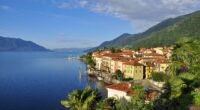
- Restaurants
- Agriturismi
- Typical products
- Travel Offers
- Tones on the Stones
- Central Lake and Borromeo Islands
- Ossola Valleys
- Varese and the Lombardian shore
- Hotels Upper Lago
- Hotels Central Lago and Borromeo Islands
- Hotels Lower Lago
- Hotels Lake Orta
- Hotels Ossola Valleys
- Hotels Varese and Lombardian Shore
- Hotels in Novara
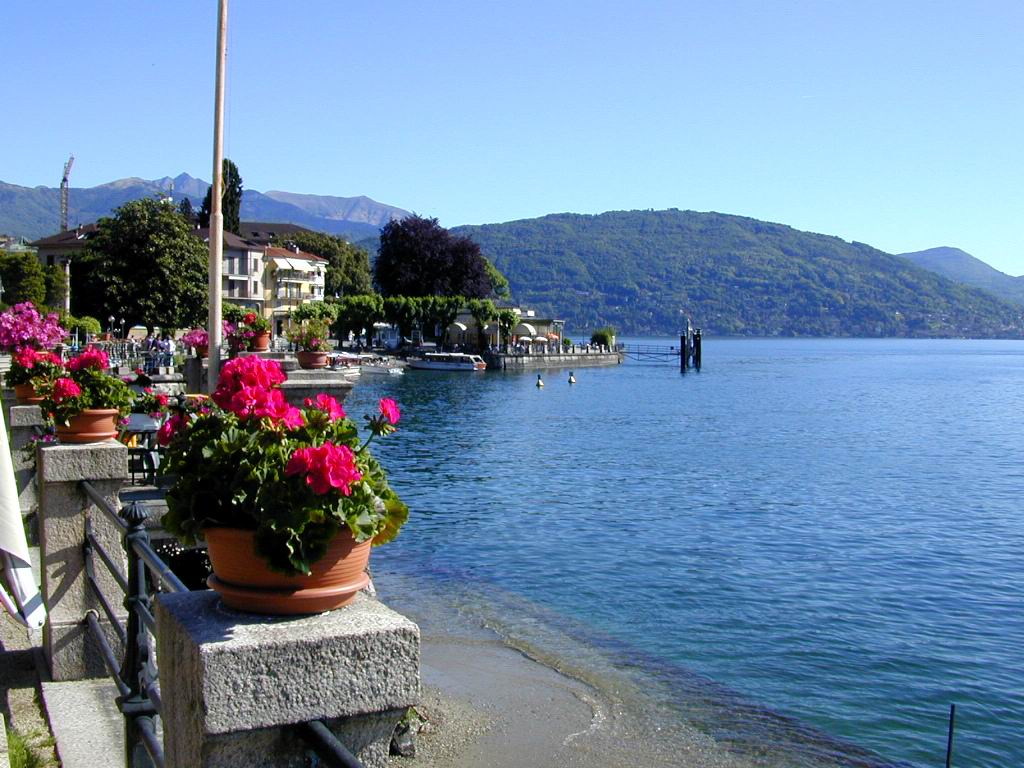
- Central Lake
Baveno and Feriolo
Must see villages on lake maggiore.
Have you ever heard from the city of Baveno? It’s a small city located in the Borromean Gulf of lake Maggiore that overlooks an incredible panorama over the lake & the mountains! The old church of the XI century is surely worth a visit, with its magnificient arcade of the via crucis. If you will visit Baveno you will notice Villa Henfrey-Branca, an historical building in Gothic style dated back to 1870, do you know that Queen Victoria stayed there with its baby child Beatrice?
On the mountains that surround the city you will see the quarries for the extraction of pink granite , one of the most famous of the area… In fact in Baveno there are many streets and squares whose names are dedicated to this material and its processing!
3 KM from Baveno you will see the little village of Feriolo, an important point for the processing and shipment of granite. Do you know that in Feriolo starts the cycle path Toce river “ “Ciclovia del Toce” ? Starting in Feriolo and cycling along the river you could reach Mergozzo and its little lake but also Domodossola !
What to do in Baveno? What to do in Feriolo?
Admire Baveno and the Borromean Gulf from a very special perspective climbing on a VIA FERRATA ! Book HERE!
Discover our 2 days Tour: Climbing on the Mountains of Lake Maggiore !
Or visit the “ Isole Borromee”!
Book now a boat tour to visit the Islands!
For more information visit the official information website!
You may also like:
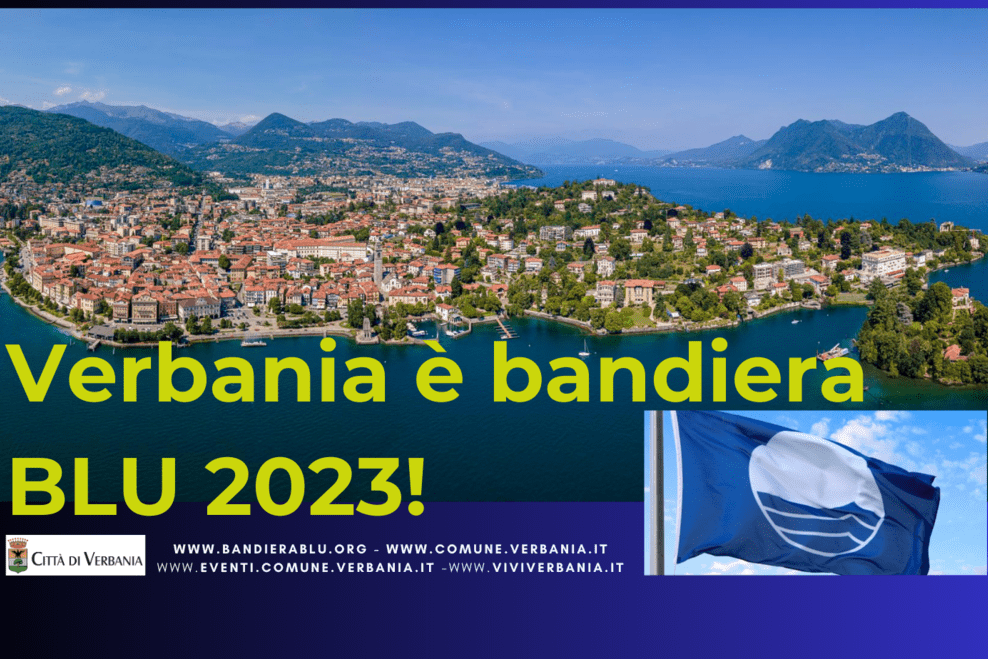
Verbania celebrates Blue Flag 2023
Verbania celebrates Blue Flag 2023 Today, the municipality of Verbania received the award from the FEE, the European Foundation for…
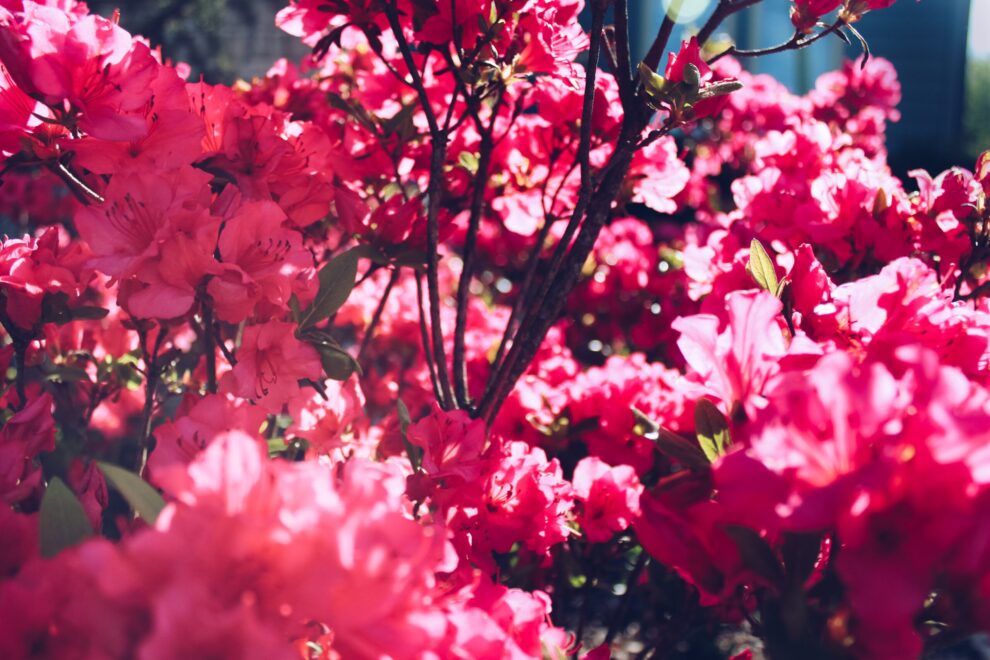
The Blossomings of Lake Maggiore
The Blossomings of Lake Maggiore A list of the most enchanting blossomings of Lake Maggiore, must see during springtime! Botanical…
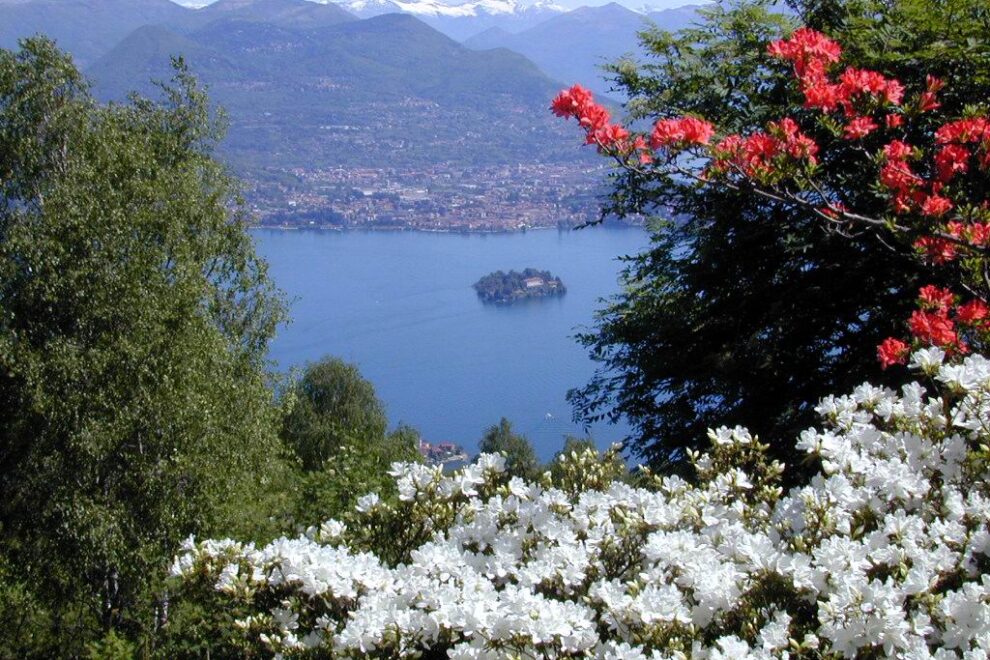
Alpinia Botanical Garden
Alpinia Botanical Garden An amazing view on Lake Maggiore Do you know Alpinia Botanical Garden? It’s a natural balcony where…
Find out the experiences on Lake Maggiore:
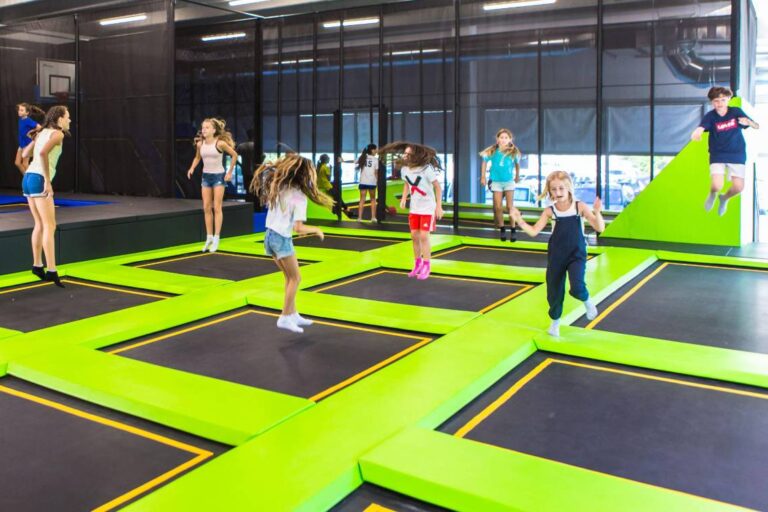
Trampoline Park Workdays
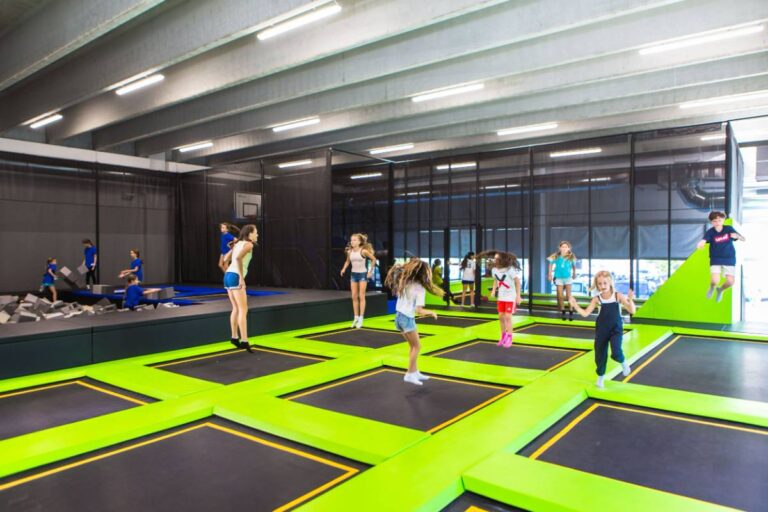
Trampoline Park Weekend
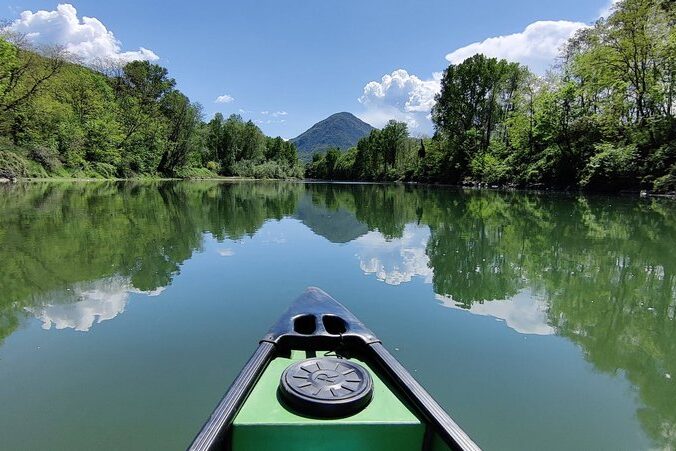
Descent of the Toce by Canadian canoe with local guide
Related posts.


- History of Baveno
- Places and monuments
- Parks and gardens
- Hamlets in Baveno
- The Granite
- From Baveno to Roncaro
- From Baveno to Loita through Romanico
- From Baveno to Oltrefiume
- From Baveno to Feriolo discovering the ancient tower
- Promenade through history and archaeology
- The Path of Granite
- The Path of Villas
- Nature Reserve of Fondotoce
- From Baveno to Alpe Vedabia
- From Baveno to Mount Camoscio
- From Baveno to Stresa
- From Baveno to Alpinia Garden
- From Baveno to Feriolo’s Tower
- The Vie Ferrate
- Outdoor Activities
- Accomodations
- Eat & Drink
- Tourist Information Centre
- How to reach Baveno
- Comune di Baveno
From the lakeside, take the street Via Monte Grappa that goes uphill to link into Via Due Riviere. The first section of the route ascends on an asphalt road flanked by the parks of elegant …
From the lakeside follow the itinerary described in “Orange Route 1” to reach the village of Romanico. After the Oratory of San Giuseppe proceed along Via Romanico-Roncaro and then turn left onto the panoramic road …
From Piazza Dante square follow the sidewalk along the Sempione main road in the direction of Verbania until you come to a statue of a lion where you turn into Via Piave. After crossing the …
From Piazza Dante square follow the itinerary described in “Purple Route 4” as far as the old village centre of Oltrefiume; then proceed along the streets Via Unione, Via G. Lavarini and Strada Cavalli. Cross …
L’itinerario si sviluppa nell’area del complesso monumentale della chiesa dei SS. Gervasio e Protasio e permette di scoprire alcuni aspetti della Baveno di duemila anni fa. Il villaggio d’epoca romana doveva svilupparsi probabilmente proprio in coincidenza …
- Architecture
La visita al Museo Granum può essere completata da una piacevole passeggiata per il centro storico di Baveno, per scoprire come il granito rosa è stato utilizzato a scopo architettonico e artistico. Proprio nella piazza della …
A walk along Baveno lakefront or, even better, a boat tour along the shore allows you to admire, in all their beauty, the luxurious villas built in the nineteenth and twentieth century, with English parks …
Piazza della Chiesa, 8 – 28831 Baveno (VB) – Tel. 0323/924.632 – Fax 0323/916.975 – [email protected] – Crediti – Privacy – Cookie Policy
- 1 Understand
- 3 Get around
Baveno is a quaint town of 4,500 residents near Stresa on the shore of the Borromean Bay, a western arm of Lake Maggiore , in Piedmont , Italy .
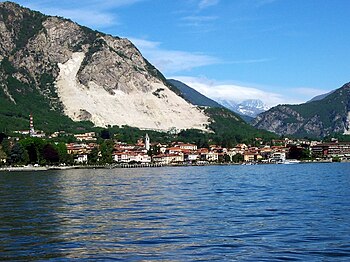
Understand [ edit ]
Get in [ edit ], get around [ edit ].
Navigazione Laghi [dead link] provides ferry services to the Borromean Islands (Isola Bella, Isola dei Pescatori and Isola Madre). There are also water taxis – these are particularly useful after ferry hours, for example, if going or returning from dinner at a restaurant on Isola dei Pescatori or Isola Bella.
See [ edit ]
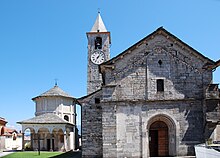
- Borromean Islands. See the Stresa article for details.
Do [ edit ]
Buy [ edit ], eat [ edit ].
- Il Portico , Corso Giuseppe Garibaldi, 37 ( opposite Grand Hotel Dino ), ☏ +39 0323 912633 . Good quality pizza, pasta and meat dishes for reasonably low prices. Very friendly and efficient staff.
Drink [ edit ]
Sleep [ edit ].
- Grand Hotel Dino , Corso Garibaldi, 20 , ☏ +39 0323 922201 , [email protected] . Picturesque location, beautiful facilities and comfortable rooms, complete with lavish interiors and décor. €120+ .
Connect [ edit ]
Go next [ edit ].
- Stresa – town nearby to the southeast
- Verbania – city to the northeast across the Borromean Bay
- Has default banner
- Articles with dead external links
- Eat listing with no coordinates
- Has map markers
- Sleep listing with no coordinates
- All destination articles
- Outline cities
- Outline articles
- City articles
- Has Geo parameter
Navigation menu
The Pink Granite
Baveno rises in a panoramic position in the center of Maggiore Lake, on the Borromean Gulf, facing the islands; Since the last century it has been a renowned place for accommodation and tourism, as evidenced by the splendid villas scattered throughout the area: Villa Henfrey (now Villa Branca), which hosted Queen Victoria of England and Villa Fedora where the musician Umberto Giordano stayed. The origins of the town are told by the Roman tombstones walled up on the facade of the Parish Church, dedicated to the S.S. Gervaso e Protaso, which stands in the center of the oldest inhabited area, on a plateau and preserves the beautiful 12th-century Romanesque façade intact. The monumental complex also includes the Baptistery of San Giovanni, of early Christian origins (fifth century), the Romanesque bell tower, the churchyard and the nineteenth-century Via Crucis. Place of extraction of pink granite, whose characteristics of particular value have made it the material for the construction of monuments of great importance in the past centuries in Milan, Rome, Paris, New York, Chicago and Bangkok. Its villages are enchanting and certainly deserve a walk: Romanesque, Roncaro and Loita lying on the hill offer breathtaking views of the lake, Oltrefiume has a characteristic historic center rich in history and Feriolo, an ancient fishing village, with its natural gulf and ‘extensive free sandy beach, it is an idyllic place.
Everything in Baveno leads back to granite and the workmanship of the stone-cutters: The quarrying and processing of local stone has profoundly influenced the character and the development of the Baveno area. From street names (which would translate from the Italian to things like “Quarry Street”, “Stone-cutters street”, “Pink granite Road”, etc) through to public, private and religious buildings but also in single monuments and artefacts, every corner shows signs of the presence of granite and of the activities of the people who were involved with it. Baveno pink granite is the most famous of the granites of the lakes (Maggiore, Orta and Mergozzo). Aimed to promote the knowledge of it Baveno works in collaboration with the Montorfano Granite Ecomuseum network, and has expanded its promotional activities to include the entire area surrounding Baveno, now part of the Sesia-Valgrande UNESCO Geopark.
GranUM Museum
The “Granum” Museum, located in the old Municipal Hall, is a multi-medial and multi-sensorial experience dedicated to the local Pink Granite and its historical and economic importance for Baveno. The museum also documents the variety of sites where granite is quarried and worked throughout the Verbano-Cusio-Ossola Province. The exhibition area is divided into 4 thematic sections: the pink granite and the variety of stones in the area; the mineralogical rarities discovered in the Baveno quarry; the work in the quarry and the processing of granite, both today and in the past; the history of quarrying here and how the granite has been used locally and abroad.
Piazza della Chiesa, 8 28831 Baveno
Info: 0323 924632 – [email protected]
MUSEUM OPENING TIMES:
From the 1st of October to the 31st of March From Monday to Saturday 10:30-12:30 Tuesday, Thursday, Friday 10:30-12:30 / 15:00-18:00
From the 1st of April to the 30th of September Every day 09:00-12:30 / 15:00-18:00
The Path of the Picasass
The most important extension of the open-air Museum is the path of the Picasass, so named because it was once used by quarry workers – called picasass in local dialect – to reach the Monte Camoscio excavation site. It now leads to a landscape installation displaying a series of stone blocks in various stages of manufacture, along with photographic panels showing work in the quarry. The footpath then forks, continuing in one direction up to the “Picasass” via ferrata, created by the C.A.I. (Italian Alpine Club) of Baveno, and in the other to the top of Monte Camoscio, where it links up with the marked route leading to the summit of Mottarone.
The granite
Granite is an intrusive magmatic rock formed over 280 million years ago: the name of the stone comes from the Latin “granum”, that is, made in “grains”. Granite is, in fact, composed of regular crystals formed as magma was slowly cooling down. In the province of Verbano Cusio Ossola, different types of granite outcrop in the area around Lake Maggiore, Mergozzo and Orta and are thus known as “Lake Granites”: the most famous of these is pink granite from Baveno, which is part of the summit of the mountain massif called Mottarone. In pink granite, 4 minerals can be found which give the fine grain that is so highly appreciated for building and ornamentation.
– orthoclase, white or pink in colour is the mineral which gives the typical colour to Baveno granite;
– plagioclase which is generally transparent or translucent;
– quartz, a vitreous and shiny mineral;
– biotite, one of the mica group of minerals which is a greeny-black colour.
Much of the mountain of Mottarone, as well as the nearby mountain of Montorfano, is also made up of another kind of granite, white granite. A vein of white granite crops out in the Cusio area with the now disused quarries at Alzo, Pella and Madonna del Sasso. To the West side of the mass of Montorfano, there is also an outcrop of greenish granite called “green granite of Mergozzo”, where the colour comes from a high level of chlorite.
Granite crystals
Baveno is well-known in the world of mineralogy, not just for its pink granite but also for some rarities found since the beginning of the 1700s during the process of quarrying. The best crystallizations are found in geodes cavities within the granite which formed inside the cooling magma, that are generally spherical and come in different sizes. Because of the extremely slow cooling process, various minerals were deposited in an orderly way to form crystals which developed on the internal walls of the cavities. The rarest and most precious minerals were discovered through microscope observation of the smallest cavities. In the Baveno quarries, over 60 different species of minerals have been found and these are considered to be true “mineralogical treasures” for their rarity, including Bavenite, an extremely rare mineral discovered for the very first time precisely in Baveno in 1901. Amongst the more “classic” crystals there are orthoclase, quartz and fluorite. Five of the nine scandium minerals known to date can be found in Baveno. In fact, four of these were discovered here for the very first time in the world. The most exceptional of is Bazzite, discovered in 1915, with its minute, pale blue, hexagonal crystals.
The beginnings
There are no certain dates as to when pink granite quarrying started in Baveno. Tradition narrates that St Charles Borromeo “discovered” the quarry quite by accident at the beginning of the 16th century. What is certain is that it is thanks to the Borromeo family, the feudal overlords of the territory, that Baveno granite began to be widely used in public and religious buildings of significant artistic prowess in Milan, such as the pillared portico of the Lazzaretto (1506), the Church of St. Fedele (1570), the Seminario Maggiore (1572) and the loggias of the Brera Palace. The relationship between Baveno and the Lombard capital of Milan became closer and closer, thanks to the waterways, ideal for transportation and already well-tested by Candoglia marble. The quarries were to be found, as they still are today, in what was known as the “angolo della voltata” (the “corner curve”) or, rather, the stretch of the Simplon road between Baveno and the hamlet of Feriolo which embraced the total environmental context of the slopes of Mount Camoscio and of the isolated step called Motto del Castello. Statistics from Baveno-based companies reveal a maximum of sixteen quarries open on the flanks of Mottarone.
The Eighteenth Century and Nicola Della Casa
The golden age of the Baveno “picasass” or stonemasons was the second half of the 19th Century and the beginning of the 20th Century with important dynasties of granite quarriers like the Adami, Bernasconi, Cirla, Della Casa, Galli, Polli and Tamini families. The merit of introducing industrial production methods and modern-style marketing techniques with exports all over Europe and to the Americas, goes to the businessmn Nicola Della Casa (1843-1894). The Della Casas began quarrying granite in Baveno in 1874 and, by 1879, their business had gained the honorary title of “premiata ditta” (award-winning company), with the distinction of the use of the royal coat of arms. Della Casa gained the “great diploma of honour” because he had been “the first in Italy to apply mechanization to granite quarrying”: he was, in fact, the first of the local entrepeneurs to introduce a steam boiler to shift the polishing lathes and he was among the first to experiment the use of mines in cavities. Della Casa also recognized the need to open-up markets at an international level, the importance of being able to speak foreign languages and the value of experimentation with new and constantly faster means of transport: all this led him to open offices in various capital cities in both Europe and America.
From the 1900s to the Present Day
In the 1900s, the Cirla Company took over from the Della Casa in the sales of granite around the world. They had been involved in the working of stone since the 17th Century and, in the 1860s, the Cirlas bought a few granite quarries in Baveno and on Montorfano Mergozzo), opening their business premises in Gravellona Toce. In 1883, the company began use mechanical lathes to produce columns for monuments and churches, including the celebrated quadriportico colonnades of the church of St- Paul-Outside-the-Walls in Rome, (1892-1928) and the column for the monument of Christopher Columbus in New York (1892). In the ensuing years, the business developed to include the supply of numerous monuments for Central and South America but also monuments in the Far East, such as the Royal Palace of Bangkok (1908-1913). After a pause due to the Second World War, the granite industry which, among other things was producing mill-wheels and bases for oil presses, found new energy in the high demand for thin granite sheets for countertops and other coverings. It is estimated that more than one million square metres of stone have been extracted from the Baveno granite quarries so far. Today quarrying continues in the Seula and Scala dei Ratti quarries, run since 1989 by the AGIFIN company. Besides the classic quarrying of ornamental stone, AGIFIN also has massive mining activity with the recovery of quarry waste from which feldspars are extracted to be used in the pottery industry or tha is used for concrete, asphalt, bituminous coating, railway ballast and different textures of gravel.
Granite in Art
Alongside the quarrying and processing of granite for the building sector and thanks to the high level of skill achieved by the “piccasass” or stonemasons, a field of production connected to the artistic working of granite and other types of stone developed. For example, a local Baveno man, Raffaele Polli, born in 1937, worked with his father and uncle in the family business which started in 1920 to create important monuments such as the statue of Winged Victory (“Vittoria Alata”) in the American Cemetery on the Via Cassia (1958) or the monument to the Normandy invasion at Colleville sur mer (1958). In this way, he learned his craft and he continued a path of personal artistic development that led him to create his own original works, sometimes with the help of his brother, Luigi. Examples in Baveno are the “Stonecutter’s Monument” and the “Crystallization of Granite”. Pink granite was also chosen by artists of international fame like Giò Pomodoro (19230-2002), who worked granite to create his sculpture “Ad Sidera” in the Taino park (VS) (1989). Panels of pink Baveno granite have also been used for the fountain created by the Swiss sculptor Dominique Appia for the Rolex headquarters in Geneva (1933). Today, the Baveno brothers, Marcello e Fortunato Marchi are active artisans in granite. One of their famous works is the sculpting of the Swiss artist Nancy Guggenheim’s creation for the Winter Olympic games at Pragelato in 2006.
Along the lakeside of Baveno the Stonecutter’s Monument made with pink granite by Raffaele Polli and in Matteotti Square the wall painting carried out in 1979 by Gilberto Carpo celebrate with different techniques the hard work of quarrymen. Churches and other religious buildings testify to the widespread and ancient use of Baveno granite for many different elements of construction. One of the most notable examples can be found in the 12 Tuscan order columns that make up the pillared portico of the Via Crucis (Stations of the Cross) in the courtyard of the church of Saints Gervasio and Protasio and in other architectural details around the splendid square. Since ancient times, granite has been used both in public and private buildings. In the old village centre of Baveno, called “Domo”, most of the houses, including some that date back to the late medieval period, have elements in granite. Outside the centre, the medieval watch-tower at Feriolo, which was part of the signal alert system of the Ossola Valley, is built entirely in pink granite. Later, from the 19th to the early 20th centuries, splendid villas were built with an intense use of this attractive pink granite for pillars, portals and other ornamental details.
IN ITALY AND ALL OVER THE WORLD
Baveno pink granite is the most famous of the granites of the lakes (Maggiore, Orta and Mergozzo) and is the most widely used within Italy and abroad: because of its specific qualities, it is preferred both as a building stone and for decoration: witness to this are the numerous works created from the beginning of the 16th century, initially just at a local level and in the neighbouring territory of Lombardy, then later in various regions of Central and Southern Italy. Baveno pink granite was first launched onto international markets thanks to Nicola Della Casa (1843-1894), an entrepreneur who used modern marketing techniques in several languages and who opened sales offices in all the major European capital cities and even in America. The good fortune of Baveno pink granite abroad continued throughout the 20th century with many works being created by the Polli family, sculptors in Baveno. In the 1900s, from the commercial point of view, it was above all the Cirla Company that developed an intense export business, selling granite all over the world including to the Far East.
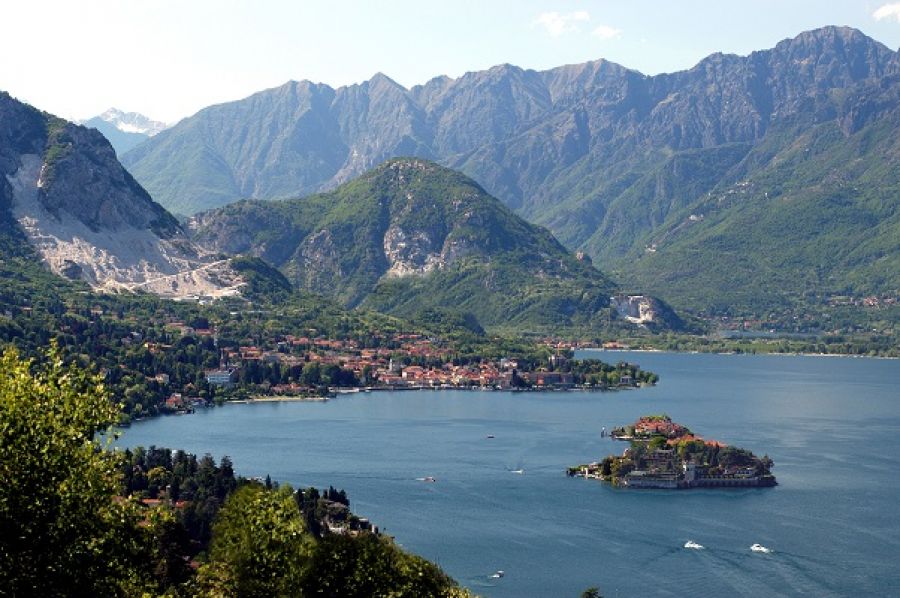

The Ultimate Guide to Things to do on Lake Maggiore
Updated March 5, 2024
// By Margherita
Looking for things to do on Lake Maggiore? We’ve got you covered with this ultimate guide to Italy’s second lake, with lots of practical tips and info about the best towns on Lake Maggiore. Remember, we’re locals!
No time to read through? Book these cool Lake Maggiore trips here!
Our favourite tour provider is GetYourGuide, offering a variety of activities, flexible booking, and 24/7 support!
- From Milan: Stresa, Alps, & Lake Maggiore Full-Day Tour – a day trip from Milan including a lake cruise and Isola Bella!
- From Stresa: 3 Borromean Islands Hop-On Hop-Off Boat Tour – best-selling package to visit the 3 islands at your own pace
- Lake Maggiore: Borromean Islands Tickets with Boat Transfer – including entry to all the villas and palaces!
- Stresa: Lake Maggiore and Borromean Islands Sunset Cruise – cruise on the lake at the most magical time of day!
- Lake Maggiore: Small Group Pasta and Tiramisu class – learn how to cook delicious Italian food!
Looking for other info on other Italian lakes? Here are our Guide to Lake Como and our Guide to Lake Garda !
If you say ‘Italian Lakes’ , most people would immediately think of Lake Como, or Lake Garda (if you’re Austrian or German, that is). But what about poor Lake Maggiore?
Lake Maggiore is probably the most offbeat of Italy’s three major lakes, even though it does attract a fair share of visitors, especially during the weekends around the major towns like Stresa, Verbania, and Locarno. It was a popular tourist destination in the late 19th/early 20th century , and some grand hotels dating back to that time still survive.
Lake Maggiore is a wonderful destination with something to offer for everyone – there’s great hiking around the lakefront and surrounding mountains like Monte Tamaro and Mottarone ; wonderful architecture and history to discover in the Borromean Islands , as well as some stunning botanical gardens for nature lovers.
Here is our guide to the best things to do in Lake Maggiore , but let’s have a look at some practical information first!
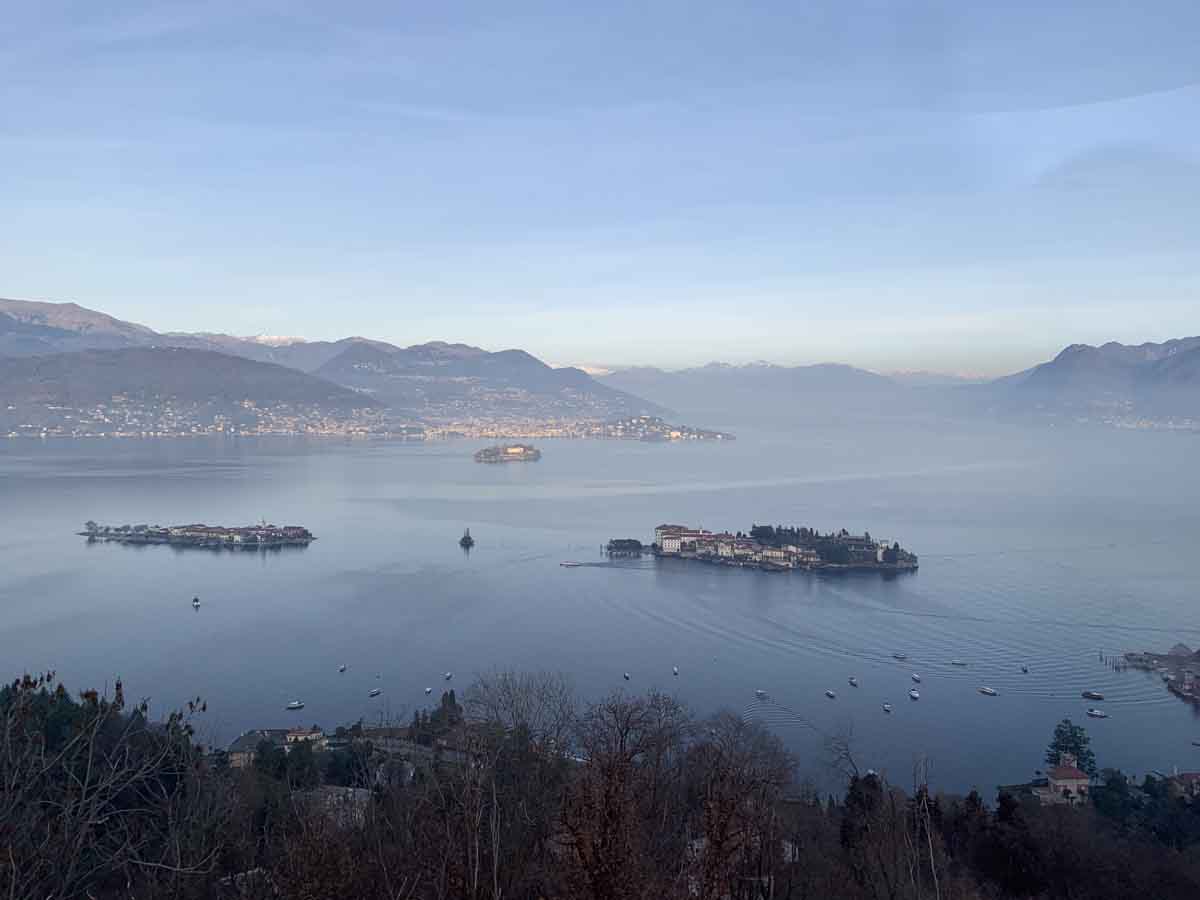
Lake Maggiore Practical Info
Like all the major Italian Lakes, Lake Maggiore is of glacial origin , with a long and narrow shape. It is located on the border between Lombardy and Piedmont – the eastern side of the lake belongs to Lombardy and the western to Piedmont, whereas the northern tip (including the towns of Ascona and Locarno) is part of Switzerland.
Lake Maggiore is Italy’s second-largest , after Lake Garda. It is known in Italian as ‘Lago Maggiore’ , meaning ‘major lake’, because in the area there are several smaller lakes like the Lake of Varese, Cannobio, Mergozzo , as well as Lake Orta.
Lake Maggiore measures 65 km from north to south (making it the longest Italian lake) and its shoreline is 170 km long.
Best Time to Visit Lake Maggiore
Are you wondering what is the best time to visit Lake Maggiore? The lake is actually a year-round destination, with each season offering different experiences and reasons to visit. Winter can be foggy, but the temperature is usually mild, and it’s low season so you won’t have to worry about the crowds. Summer is great if you want to go swimming or hiking high in the mountains, but it can be very hot and busy with day trippers.
Autumn and spring are probably the best seasons to visit Lake Maggiore – in spring you can admire the stunning flower displays at Villa Taranto and the Borromean Islands, and autumn is ideal to go hiking at lower altitudes, pick chestnuts and admire the colourful autumn leaf display.
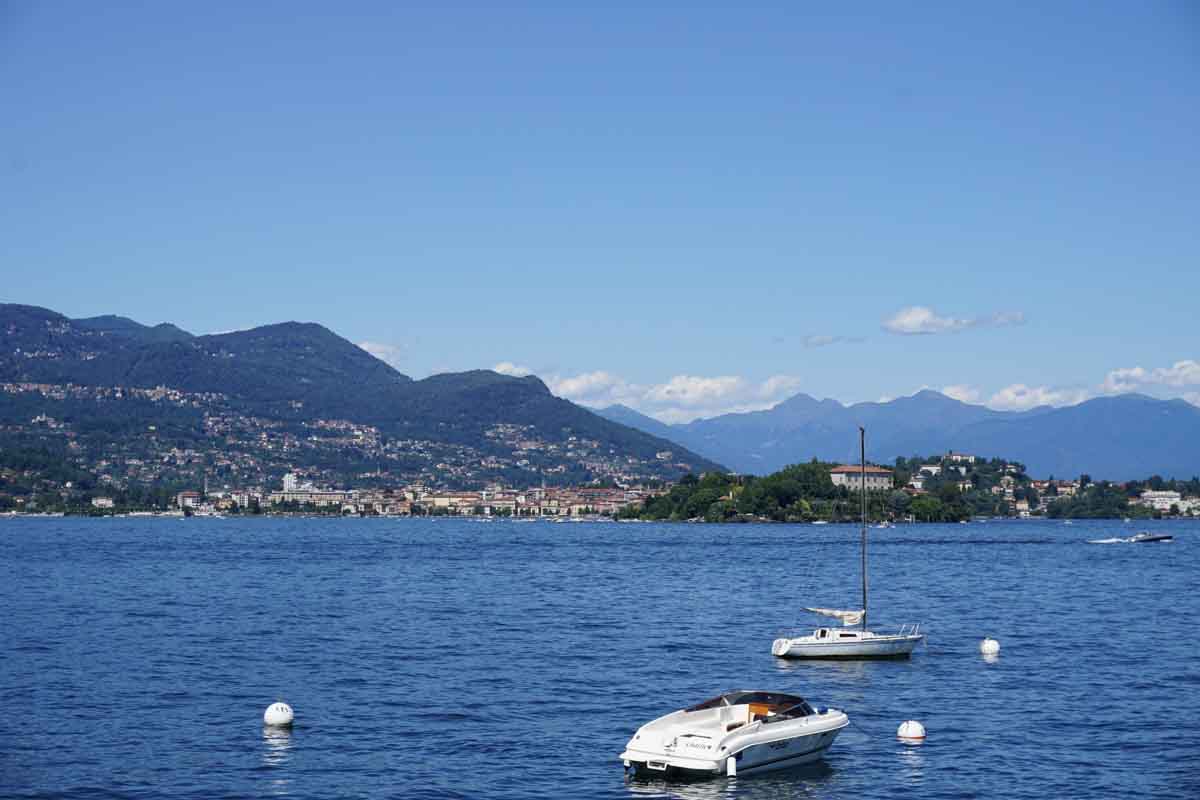
How to Get to Lake Maggiore From Milan
It’s very easy to get from Milan to Lake Maggiore by train. Both sides of the lake are served by railway lines – the eastern (Lombardy) by the Milan-Luino line, with hourly departures, and the western (Piedmont) by the Milan-Domodossola line, with some trains continuing to Brig in Switzerland and onward to Basel and Geneva.
To get around Lake Maggiore you can also make use of two ferry lines – one connecting the two sides, from Laveno to Intra (Verbania), and the second running from Arona in the south to Cannobio in the north, and vice-versa. You can get info on ferry schedules and tickets on the official website of Navigazione Laghi .
Can You Swim in Lake Maggiore?
Last question: can you go swimming in Lake Maggiore? In short, the answer is yes . Most Lake Maggiore towns will have a spiaggia (beach), but make sure you don’t swim more than 100/200 meters off the shore to keep a safe distance from speedboats and ferries. Generally speaking, the further north you go, the cleaner the water will be, especially away from the big cities.
The best place to swim in Lake Maggiore (in my opinion) is between Maccagno and Pino , close to the Swiss border.
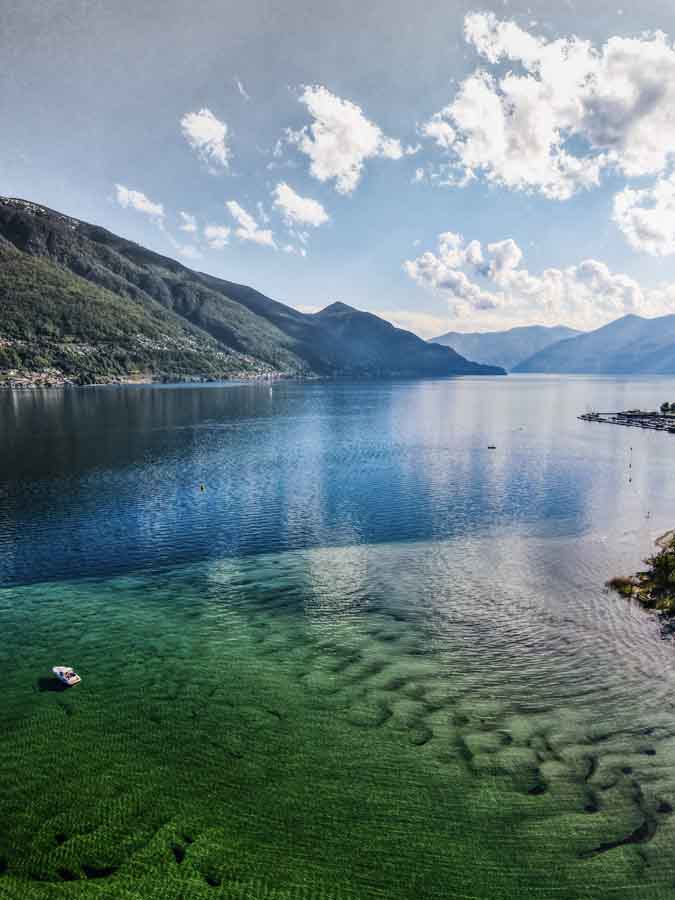
Best Towns and Things to See on Lake Maggiore
1) verbania.
Verbania is the biggest town around Lake Maggiore , sitting on its western side with a dazzling backdrop of green-covered mountains, perfect for hiking. Boasting a picturesque lake-front area that invites relaxing sunset strolls and an enchanting old town, Verbania is a must-visit when exploring Lake Maggiore.
The town was born in 1939 by the union of two municipalities, Intra and Pallanza , separated by the San Bernardino river.
The most beautiful site and most prominent attraction in Verbania, however, is the impressive Villa Taranto. A walk through the elegant gardens of the 19th-century villa, which are easily among the finest in Italy, will surely leave you in awe. The area’s microclimate allows a total of 20.000 plants, including tropical species to grow there, some of which will not normally survive in northern Italy’s cool climate.
The gardens are open between the 12th of March and the 1st of November. You can check out updated opening hours and prices here .
Verbania is well connected by ferry to the rest of the towns surrounding Lake Maggiore, making it an excellent base to explore the rest of the lake.
-Getting to Verbania from Milan: The Milan-Domodossola line travels along the western part of the lake, stopping at all main Lake Maggiore towns including Verbania-Pallanza. There are hourly departures from Milano Centrale and Milano Porta Garibaldi stations, and travel time is between 1 hour 15 and 1 hour 45.
Stresa is a quaint lake resort town along Lake Maggiore . Recognized for its extravagant villas and Art Nouveau hotels lining the lakefront, Stresa still breathes cultivated air that has influenced the town since the late 19th century.
Add spectacular views of the enchanting Borromean Islands and you have the picture-perfect place for a slow-paced walk or having gelato on a bench.
If you are feeling adventurous, you can also walk under the cool shade of chestnut trees from Stresa to Belgirate on the 10-kilometer Chestnut Trail, especially beautiful in fall when the leaves turn yellow and orange.
-Getting to Stresa from Milan: Domodossola-bound trains also stop at Stresa station. There are hourly departures from Milano Centrale and Milano Porta Garibaldi, and travel time is between 1 hour 10 and 1 hour 30.
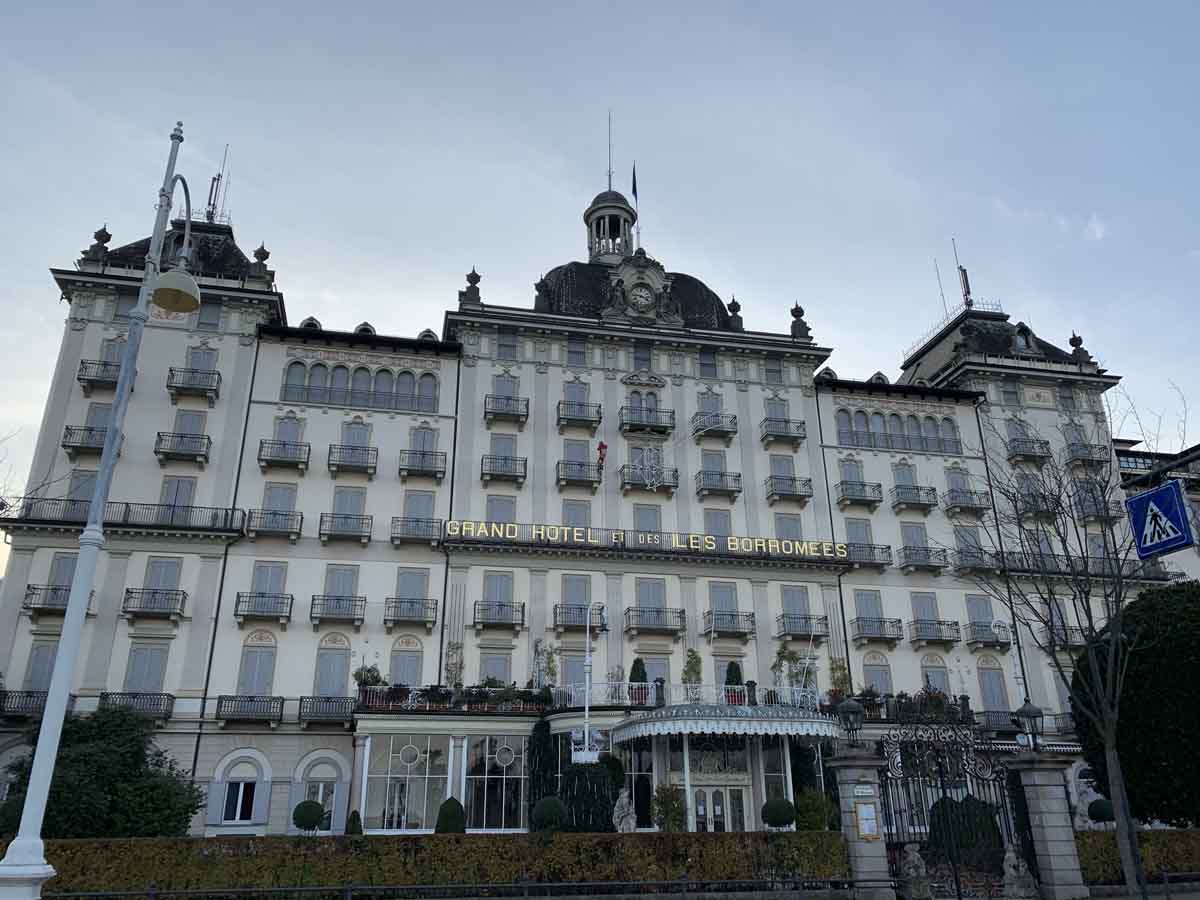
Next to Stresa, you find the historical town of Baveno recognized by the cute “Maggie” sculpture and “Lake and Mountains” monument on the promenade. But there are also darker monuments like the 17 Martyrs Memorial and the War Memorial, both reminiscing the fallen in World War two.
However, looking further back in history, there are rustic areas like Domo and Baitone where you find some of the most ancient structures in Baveno, among them, the impressive St. Gervaso and Protaso Church that has sections dating all the way back to the 1050s.
Next to it, the 5th century Baptistery and the Way of the Cross complete the complex which is Baveno’s most prominent tourist attraction.
-Getting to Baveno from Milan: Baveno is the stop between Stresa and Verbania-Pallanza along the Milan-Domodossola line, so allow about 1 hour 15/1 hour 30 to get there.
4) Borromean Islands
One of the absolute best things to do on Lake Maggiore is to take a boat trip to explore the picturesque Borromean Islands. The small group of islands includes Isola Bella, Isola Madre, and Isola dei Pescatori. On top of that, the archipelago includes two small islets, Isolino di San Giovanni and the Rock of Malghera.
In the 16th century, the islands were bought by the Milanese Borromeo family which mostly owns the islands to this day. Since then, opulent palaces and glamorous gardens have been built and maintained and make out the main draw for tourists flocking to these captivating islands.
There are daily boat trips to the Borromean Islands from lakeside towns like Stresa, Baveno, and Verbania. Note that on top of the boat tickets, there is a fee once you get to the islands to enter the palaces.
PLEASE NOTE that Isola Bella and Isola Madre are closed between November and March, whereas Isola dei Pescatori can be accessed year-round (since people actually live there)

-Isola Bella
Isola Bella is one of the most astonishing islands of the archipelago. It took almost 400 years to transform a rock in the lake into a luxurious palace containing exquisite Baroque artwork and a garden like no other.
Of particular interest is the Galleria Berthier with a large collection of original paintings and copies of incredible masterpieces by famous painters like Raphael, Guido Reni, and Correggio. You should also pay attention to the Throne Room, Tapestry Room, and the spectacular Grottoes with walls covered in pebbles and shells.
The garden’s major masterpiece is the imposing monument of Teatro Massimo where vivid plants climb up majestic statues and obelisks in front of the neatly symmetrical garden.
-Isola Madre
Isola Madre is the largest of the islands and is a delightful balance between rich botanical gardens and splendid architecture. The palace on the island is decorated with unique furniture belonging to the Borromeo family. Pay special attention to the Reception Room, the Venetian Lounge, and the Pope’s Room with their prestigious details, wall paintings, and ancient artifacts.
However, the most reputable collection of the palace is the puppet theater used by the Borromeo family to entertain guests since the mid-17th century. In fact, this is the best-preserved puppet collection in the world – right there for you to see on Isola Madre.
To top this off, look out the windows and you will find million-dollar views of the splendid botanical gardens where rare plant species from across the globe live in harmony with perfectly groomed local plants creating one of the most outstanding gardens in Italy.
-Isola dei Pescatori
This is the only one of the Borromean Islands that is inhabited all year round by a little community of fishermen, and it is also the smallest. To take advantage of the tiny space on the island, homes are built on several storeys, with large balconies that are perfect for drying fish.
If you are looking for exquisite fish dishes for lunch, look no further. They also hold a little street market where you can buy gifts. Compared to the other islands, Isola dei Pescatori doesn’t have a palace or gardens to show for, but the quaint little community built on such a tiny space is super cute to witness.
Getting to the Borromean Islands from Stresa: There are frequent speedboats connecting Stresa to the Borromean Islands, as well as the islands to one another. You can pay separately for each leg you want to cover, get combo tickets including two or three islands, or even a day ticket for €16.90 that includes unlimited journeys between Stresa and the islands
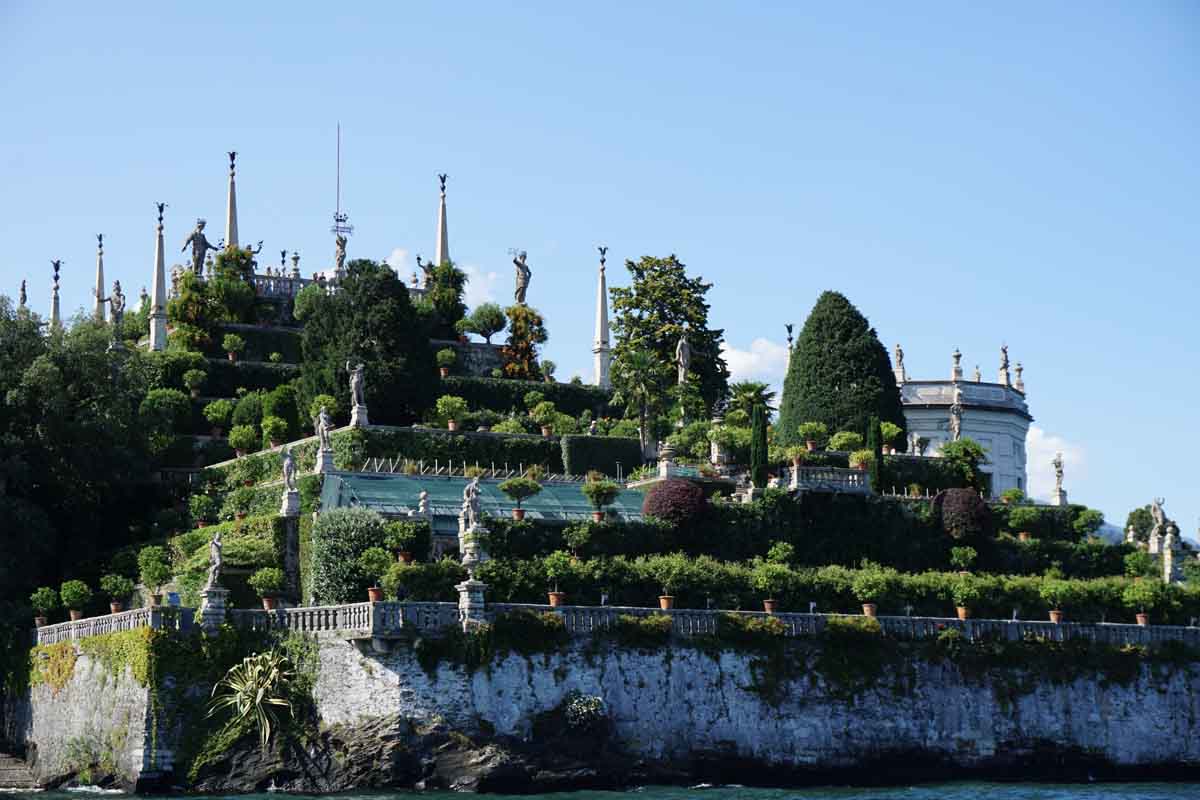
5) Mottarone
One of the top attractions on Lake Maggiore is the cable car from Stresa to the summit of Mottarone mountain at an altitude of 1491 meters. Unfortunately, it has been closed since 2021, after a tragic accident . There is currently no information on when it will re-open.
As an alternative, you can drive the curvy, scenic road to the top , which will provide sweeping views! It is also a famous climb for local road cyclists , but it’s quite challenging at 15 km long with an average gradient of 6.5%.
Halfway up, where the cable car normally stops for a change of gondola, you can take advantage and visit the Alpinia Gardens before continuing to the summit.
The adventurous will also find the 1.2-kilometer bob-slide on the top an exciting activity to top off their visit to the summit.
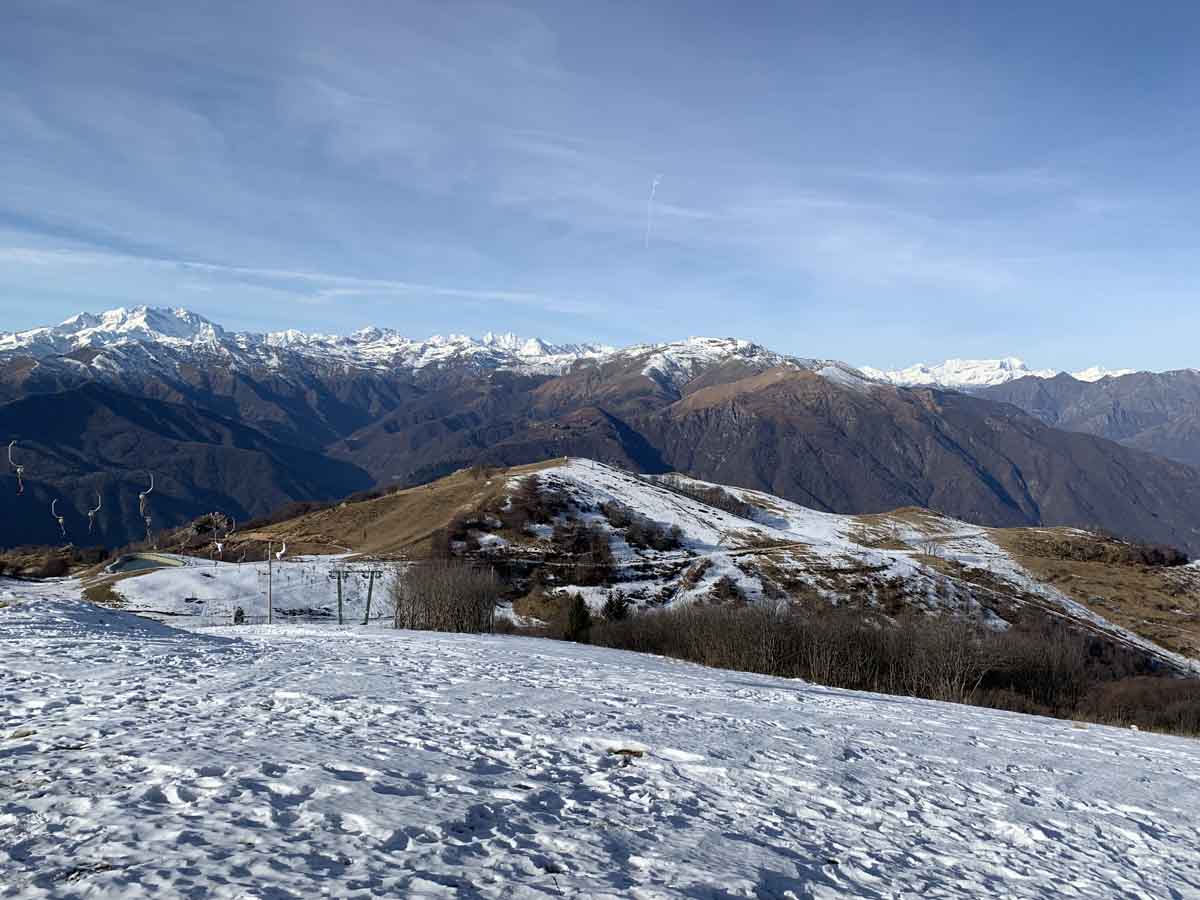
6) Laveno-Mombello
Picturesque Laveno-Mombello is yet another town in Lake Maggiore that is worth adding to your itinerary, particularly for two attractions.
Firstly, the impressive Hermitage of Santa Caterina del Sasso which was built in the 13th century catches your eye when coming by boat. Sitting on the steep rock side, there are 80 steps to reach it if you disembark by boat. You can also drive there, which will leave you on the top of 240 steps leading down to the hermitage – or you can ride the elevator. Note that the complex is only open in the morning.
The other attraction of Laveno-Mombello is the unique open-air “bucket gondola” taking you up to Sasso del Ferro where you get spoiled by yet another epic view of the lake.
-Getting to Laveno-Mombello from Milan: There are hourly trains from Milan Cadorna to Laveno-Mombello Lago, taking approximately 1 hour 40.
One of the best things to do on Lake Maggiore is to wander the cobblestoned streets of Luino where you will come by traditional markets. It is the birthplace of Piero Chiara and there is even a street in the town named after the writer.
Luino is famed for its emblematic pastel-colored houses and cute cafés and restaurants and makes for the perfect place to grab lunch while touring Lake Maggiore.
If you plan on exploring the Swiss part of the lake, Luino is the natural stop close to the border.
-Getting to Luino from Milan: There are a couple of direct trains a day from Milan Porta Garibaldi to Luino, taking 1 hour 40. Otherwise you’ll have to change trains in Gallarate, adding about 15/20 minutes to your journey time.
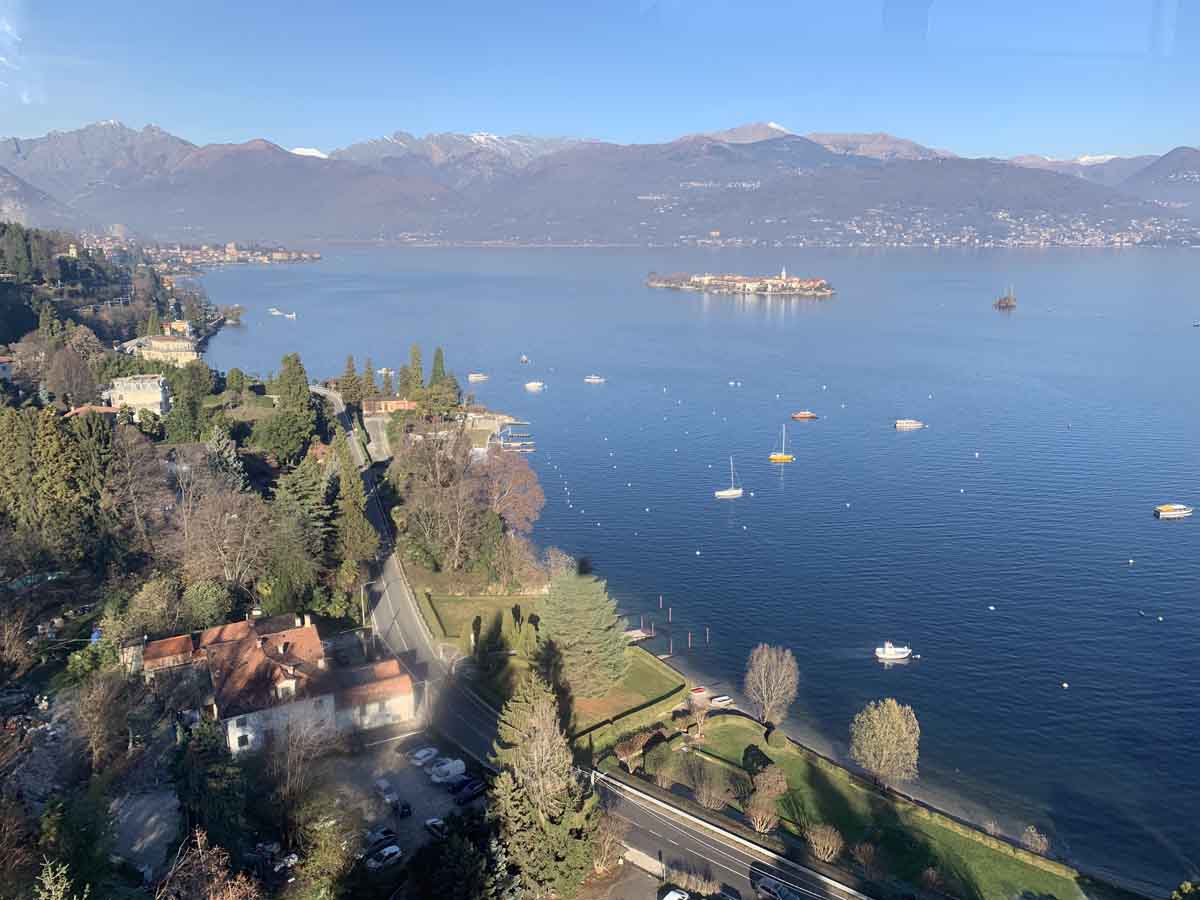
The quintessential town of Angera is mainly known for its hilltop castle, Rocca Borromeo di Angera. The castle complex includes structures from the 11th to the 17th centuries and splendid gardens.
Walk through opulent rooms decorated with exquisite paintings and frescoes. And do not miss out on the Doll and Toy Museum which also finds its place inside.
-Getting to Angera from Milan: First you’ll have to take a train to Sesto Calende – there are hourly departures from Milano Centrale and Milano Porta Garibaldi stations. At Sesto Calende, you can take a taxi or bus to Taino-Angera, just 10 km away.
Ascona is an enchanting town on the Swiss side of Lake Maggiore , recognized by its colorful houses lining the lakefront and often referred to as “The Pearl of Lake Maggiore”.
Other than strolling along the romantic promenade, Ascona is a wonderful place to do holiday shopping. In the narrow cobblestoned streets in the old town, you will find all sorts of shops.
From Ascona, you can also take a boat to discover the Brissago Islands. Of particular interest is the colorful Botanical Gardens of Ticino where more than 1700 plant species from across the world make out one of the most romanticized gardens in Lake Maggiore.
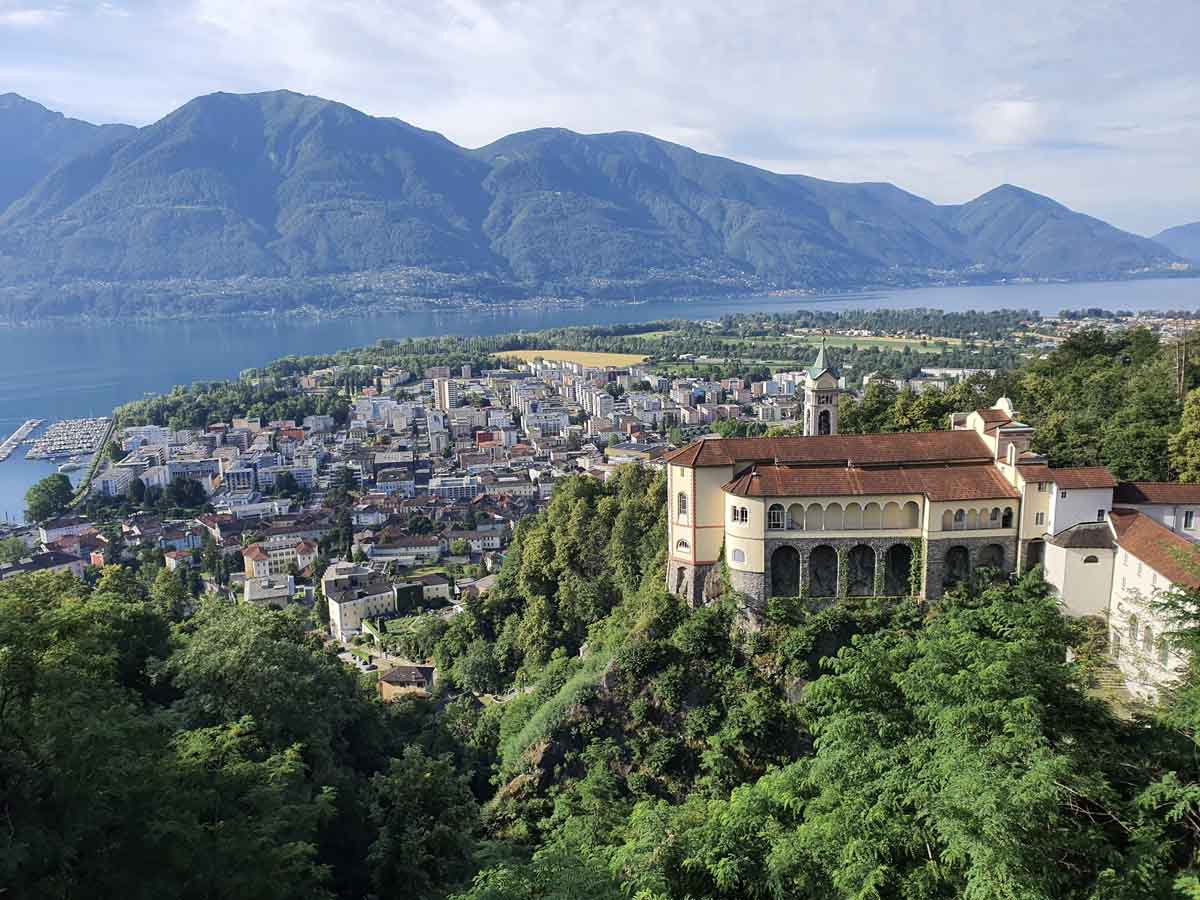
10) Locarno
Locarno is also on the Swiss side of the lake, famous for its Film Festival that takes place every August, and popular for its delightful microclimate. There are plenty of things to do in this enchanting town where narrow cobblestoned streets lined with pastel-colored houses take you to animated squares.
Visit the 12th-century Visconteo Castle , stroll through the romantic and colorful Parco delle Camelie, and hop on the funicular to the Sanctuary of the Madonna del Sasso which is a popular pilgrimage site. From there, you will also be rewarded with sweeping views of Locarno and the lake.
-Getting to Locarno from Milan: There are direct trains between Milano Centrale and Locarno every two hours, taking 1 hour 50 in total. Alternatively, you’ll have to catch a train to Lugano and switch to a Locarno-bound train. If you love scenic train journeys, you can travel between Domodossola and Locarno along the Ferrovia Centovalli, a popular journey in autumn and winter and one of the best things to do in Italy in November ! Just book ahead as trains sell out in advance.
The Best Time to Visit Baveno, Italy for Weather, Safety, & Tourism
The best times to visit Baveno for ideal weather are
April 23rd to October 21st
based on average temperature and humidity from NOAA (the National Oceanic and Atmospheric Administration). Read below for more weather and travel details.
Baveno Travel Guide
Temperature.
- Perceived Temperature
- Rain and snow
- Humidity and wind
- The busiest and least popular months
- Overall travel experience by time of year
Other Baveno Travel Info
Weather in baveno.
Average temperatures in Baveno vary greatly. Considering humidity, temperatures feel cold for about half of the year and otherwise nice with a chance of rain or snow throughout most of the year. The area is less temperate than some — in the 32nd percentile for pleasant weather — compared to tourist destinations worldwide. Weeks with ideal weather are listed above . If you’re looking for the very warmest time to visit Baveno, the hottest months are July, August, and then June. See average monthly temperatures below. The warmest time of year is generally mid July where highs are regularly around 84.9°F (29.4°C) with temperatures rarely dropping below 62.8°F (17.1°C) at night.
Baveno Temperatures (Fahrenheit)
Baveno temperatures (celsius), “feels-like” temperatures.
The way we experience weather isn’t all about temperature. Higher temperatures affect us much more at higher humidity, and colder temperatures feel piercing with high winds. Our perceived temperatures factor in humidity and wind chill to better represent how hot or cold the day feels to a person.
Baveno Perceived Temperature (F)
Baveno perceived temperature (c), average baveno temperatures by month.
Daily highs (averaged for the month) usually give the best indication of the weather. A significantly lower mean and low generally just means it gets colder at night.
Show Fahrenheit
Show celsius, precipitation (rain or snow).
If dry weather is what you’re after, the months with the lowest chance of significant precipitation in Baveno are January, December, and then February. Note that we define “significant precipitation” as .1 inches or more in this section. The lowest chance of rain or snow occurs around mid October. For example, on the week of October 15th there are no days of precipitation on average. By contrast, it’s most likely to rain or snow in early to mid June with an average of 3 days of significant precipitation the week of June 11th.
Chance of Precipitation
The graph below shows the % chance of rainy and snowy days in Baveno.
Snow on the Ground
The graph below shows the average snow on the ground in Baveno (in).
Average Rain and Snow by Month
Show inches, show centimeters, humidity and wind.
Baveno has some very humid months, with other comfortably humid months. The least humid month is March (51.9% relative humidity), and the most humid month is November (73.2%).
Wind in Baveno is usually extremely calm . The windiest month is March, followed by May and April. March’s average wind speed of around 4 knots (4.6 MPH or 7.4 KPH) is considered “a light breeze.” Maximum sustained winds (the highest speed for the day lasting more than a few moments) are at their highest in early March where average top sustained speeds reach 11.7 knots, which is considered a moderate breeze.
Relative Humidity (%)
The graph below shows the average % humidity by month in Baveno.
The graph below shows wind speed (max and average) in knots.
Average Wind Speeds
Show wind speeds.
All wind speeds are in knots. 1 knot = 1.15 MPH or 1.85 KPH.
Show Relative Humidity by Month
Is it safe to travel to baveno.
Our best data indicates this area is generally safe. As of Dec 04, 2023 there are no travel advisories or warnings for Italy; exercise normal security precautions. Check this page for any recent changes or regions to avoid: Travel Advice and Advisories . This advisory was last updated on Nov 22, 2023.
The Busiest and Least Crowded Months
The busiest month for tourism in Baveno, Italy is May, followed by June and March. Prices for hotels and flights will be most expensive during these months, though you can save if you purchase well in advance. Tourists are unlikely to visit Baveno in December. Those willing to visit at these times will likely find it the least expensive month.
Estimated Tourism by Month
Most popular months to visit, overall baveno travel experience by season, spring (march through may).
Humidity and temperatures combine to make this season feel moderate. Highs range from 76°F (24.4°C) and 54.7°F (12.6°C) with warmer temperatures in the later months. Rain is somewhat common with 6 to 10 days of significant precipitation per month. Spring is the busiest for tourism, which makes it a good time for those looking for things to do.
Summer (June through August)
The middle-year months have very comfortable weather with high temperatures that are comfortable. These months see the most precipitation with 8 to 10 days of precipitation per month. June – August is the second busiest season for tourism in Baveno, so lodging and other accommodations may cost slightly more.
Fall (September through November)
Fall daily highs range from 77°F (25°C) and 49.2°F (9.6°C), which will feel chilly given the humidity and wind. It rains or snows a significant amount: 6 to 9 days per month. Tourism is the slowest during these months due to the weather, so hotels may be affordably priced.
Winter (December through February)
Weather is too cold this time of year in Baveno to be enjoyable for warm weather travelers. The average high during this season is between 55.9°F (13.3°C) and 45.9°F (7.7°C). On average, it rains or snows a fair amount: consistently 5 times per month. These times of year are fairly slow with tourists.
Best Times to Travel › Italy › Baveno, Italy
Similar Destinations
- Stresa, Italy
- Verbania, Italy
- San Bernardino Verbano, Italy
- Armeno, Italy
- Belgirate, Italy
- Nebbiuno, Italy
- Lesa, Italy
- Pettenasco, Italy
- Miasino, Italy
- Premeno, Italy
Popular Destinations
- Pune, India
- Krabi, Thailand
- Pai, Thailand
Italy Baveno
Our driver will pick you up and drop you off exactly at the address you specify
Travel with us in comfort and visit the beautiful places of Europe

Do you need a ride to Baveno? Book a trip with our private driver
Ride with our intercity taxi visit baveno in 2024, most popular routes to baveno.

Most popular routes from Baveno

What else to visit In and around Baveno
Stresa (4.02 km).
Perched gracefully on the shores of Lake Maggiore, Stresa is a sparkling jewel of Italy, offering a fusion of natural beauty, historic charm, and a dash of opulence. The town beckons with its lakeside allure and Alpine backdrop.
Domodossola (27.5 km)
Nestled in the heart of the Ossola Valley, Domodossola stands as an enchanting gateway between Italy and Switzerland, merging medieval charm with Alpine splendor, offering a unique blend of nature and history.
Milano Malpensa (35.72 km)
As the largest international airport in northern Italy, Milan Malpensa Airport is the base for countless airlines and the gateway to a cosmopolitan city full of fashion, culture and history.
Lugano (36.1 km)
Lugano, located on the southern border of Switzerland, is a city that perfectly combines Swiss precision with Italian charm. This pleasant lakeside town offers not only stunning natural scenery but also a rich culture and gastronomy.
Como city (46.41 km)
Located on the Italian-Swiss border, Como is a city known for its picturesque lakeside setting and enchanting views. With its blend of cultural heritage and natural beauty, Como offers an unforgettable destination full of Italian charm and sophistication.
Bellinzona (50.99 km)
Encircled by the Alps, this charming city is most renowned for its trio of UNESCO World Heritage-listed castles, offering an unforgettable experience in the heart of Swiss-Italian culture.
Experience the Journey with TheEuroRoadTrip.eu
Visit baveno with us during a road trip between european cities.
Traveling is much easier with our service! Book your trip, the local driver will pick you up at the agreed date and time at the hotel and transfer you to your final destination through European cities with their own stops. And yes, even in Baveno!
Trust us to ensure a carefree journey to Baveno thanks to English-speaking local drivers
Travel with us comfortably, safely and without stress! You do not have to worry about missed flights, delayed trains or overpriced taxis. Our driver will do his best to meet your requirements.

IMAGES
VIDEO
COMMENTS
The Granum museum is dedicated to pink granite and its historical and economic importance for Baveno. The multi-medial exhibition area is divided into 4 sections: types of granite and of other stone in the province of VCO; mineralogical rarities; the workmanship and processing of granite both today and in yesteryear; the history of quarrying and how granite is used locally and overseas.
Baveno, charming town on Lake Maggiore with Roman origins, known for its mineral waters and its pink granite quarries, is a famous tourist and holiday resort . ... Today the descendents of the royal families of Europe still visit the Branca family, who acquired the property after the death of Charles Henfrey. Villa Fedora
Make your visit to Baveno complete by dining at Amelie Ristorante Afficattamere Baveno. Amelie Ristorante Affittacamere Baveno. Address: Via I Maggio, 17, 28831 Baveno VB, Italy. Website: Amelie Ristorante Affittacamere Baveno. Opening hours: Mon - Sat: 7:30pm - 10pm; Sun - 12:30pm - 2pm.
visit Feriolo: which is a pretty town just 3 km from Baveno. It is located in a natural bay of rare beauty. The small village of fishermen and stonecutters was an important commercial center for local products (fish, cheese, hay, firewood) and a place of processing and embarkation of the famous marbles and granites of the area: the Candoglia ...
Baveno. A picturesque town on the shore of Lake Maggiore north of Stresa, Baveno faces the romantic Borromean Islands and backs to the green hills surrounding the lake. The town of about 5,000 residents has seen a very long history, starting with prehistoric human existence. The many archeological finds testify to the many millennia that have ...
The Granum museum is dedicated to pink granite and its historical and economic importance for Baveno. The multi-medial exhibition area is divided into 4 sections: types of granite and of other stone in the province of VCO; mineralogical rarities; the workmanship and processing of granite both today and in yesteryear; the history of quarrying and how granite is used locally and overseas.
A mix of the charming, modern, and tried and true. See all. 2024. Hotel Rigoli. 515. from $98/night. Hotel Alpi. 296. from $90/night.
The Granum museum is dedicated to pink granite and its historical and economic importance for Baveno. The multi-medial exhibition area is divided into 4 sections: types of granite and of other stone in the province of VCO; mineralogical rarities; the workmanship and processing of granite both today and in yesteryear; the history of quarrying and how granite is used locally and overseas.
Baveno, where the sunsets are even more romantic. Nestled among green hills sloping gently down to the waters of Lake Maggiore, Baveno is a Piedmontese municipality in the province of Verbano-Cusio-Ossola of about 5,000 inhabitants.. The ancient village, rich in history, tradition and culture, is enriched by a splendid view of the Borromean Islands and the breathtaking and evocative panorama ...
The Granum museum is dedicated to pink granite and its historical and economic importance for Baveno. The multi-medial exhibition area is divided into 4 sections: types of granite and of other stone in the province of VCO; mineralogical rarities; the workmanship and processing of granite both today and in yesteryear; the history of quarrying and how granite is used locally and overseas.
The visit to the Granum Museum can be completed by a pleasant walk through the historic center of Baveno, to discover how... Discover more Ufficio IAT Stresa C.F. 00201600038 P.IVA 00201600038 Piazza Marconi 16, 28838 - Stresa (VB) Tel. +39 0323 30150 WhatsApp +39 371 3925571 [email protected]
Baveno è social! Tagga i tuoi contenuti sui social durante la tua visita con il tag ufficiale! #ciaoBaveno Share on... ©2024 Baveno Turismo Piazza della Chiesa, 8 - 28831 Baveno (VB) - Tel. 0323/924.632 - Fax 0323/916.975 - [email protected] - ...
Visit Baveno. Things to do Reviews. Relax and rejuvenate at this lakeside resort's grand villas and healing thermal springs, wedged between rugged pink-granite mountains and the shining shores of Lake Maggiore. Baveno is an enchanting town on the western shores of Lake Maggiore. From the early Roman merchants who traded in the 1st-century B.C ...
Admire Baveno and the Borromean Gulf from a very special perspective climbing on a VIA FERRATA! Book HERE! Discover our 2 days Tour: Climbing on the Mountains of Lake Maggiore! Or visit the "Isole Borromee"! Book now a boat tour to visit the Islands! For more information visit the official information website!
ItinerariesFrom Baveno to Loita through Romanico. From the lakeside follow the itinerary described in "Orange Route 1" to reach the village of Romanico. After the Oratory of San Giuseppe proceed along Via Romanico-Roncaro and then turn left onto the panoramic road …. > Read more.
Baveno is a quaint town of 4,500 residents near Stresa on the shore of the Borromean Bay, a western arm of Lake Maggiore, in Piedmont, Italy . View of Baveno and the mountains beyond, from Isola dei Pescatori in Lake Maggiore.
The best tours in Baveno are: Baveno: Hop-On Hop-Off Boat Tour to 3 Borromean Islands. Lake Maggiore: Borromean Islands Tickets with Boat Transfer. Hop-on Hop-off Boat Tour to Isola Bella. Lake Maggiore: Gardens, Lake Cruise, & Gourmet Food Tasting. Lake Maggiore: 1-Day Boat, Bus & Cable Car Travel Pass.
Best Time To Visit Baveno. The best time to visit Baveno is during the summer months of June, July, and August.During this time, the weather is warm and sunny, making it perfect for exploring the town and enjoying outdoor activities.Additionally, tourist attractions such as the Baveno Promenade and the Borromeo Islands are open and accessible. However, it is important to note that summer is ...
The Pink Granite. Discovering the historic Baveno's villas. A walk on the Baveno lakefront or, even better, a boat tour along the banks, allows you to admire in all their splendor the luxurious villas built between the nineteenth and twentieth centuries, with English-style parks and gardens full of exotic essences. and valuable.
The most exceptional of is Bazzite, discovered in 1915, with its minute, pale blue, hexagonal crystals. The beginnings. There are no certain dates as to when pink granite quarrying started in Baveno. Tradition narrates that St Charles Borromeo "discovered" the quarry quite by accident at the beginning of the 16th century.
-Getting to Baveno from Milan: Baveno is the stop between Stresa and Verbania-Pallanza along the Milan-Domodossola line, so allow about 1 hour 15/1 hour 30 to get there. 4) Borromean Islands ... Visit the 12th-century Visconteo Castle, stroll through the romantic and colorful Parco delle Camelie, and hop on the funicular to the Sanctuary of the ...
Weeks with ideal weather are listed above. If you're looking for the very warmest time to visit Baveno, the hottest months are July, August, and then June. See average monthly temperatures below. The warmest time of year is generally mid July where highs are regularly around 84.9°F (29.4°C) with temperatures rarely dropping below 62.8°F ...
Visit Baveno in 2024 45.909146, 8.500624 Open in Google Maps. Most popular routes to Baveno. Geneva to Baveno from € 136 per seat Switzerland to Italy 320 km, 3h 50m. Most popular routes from Baveno. Baveno to Geneva from € 136 per seat Italy to Switzerland 320 km, 3h 50m. What else to visit